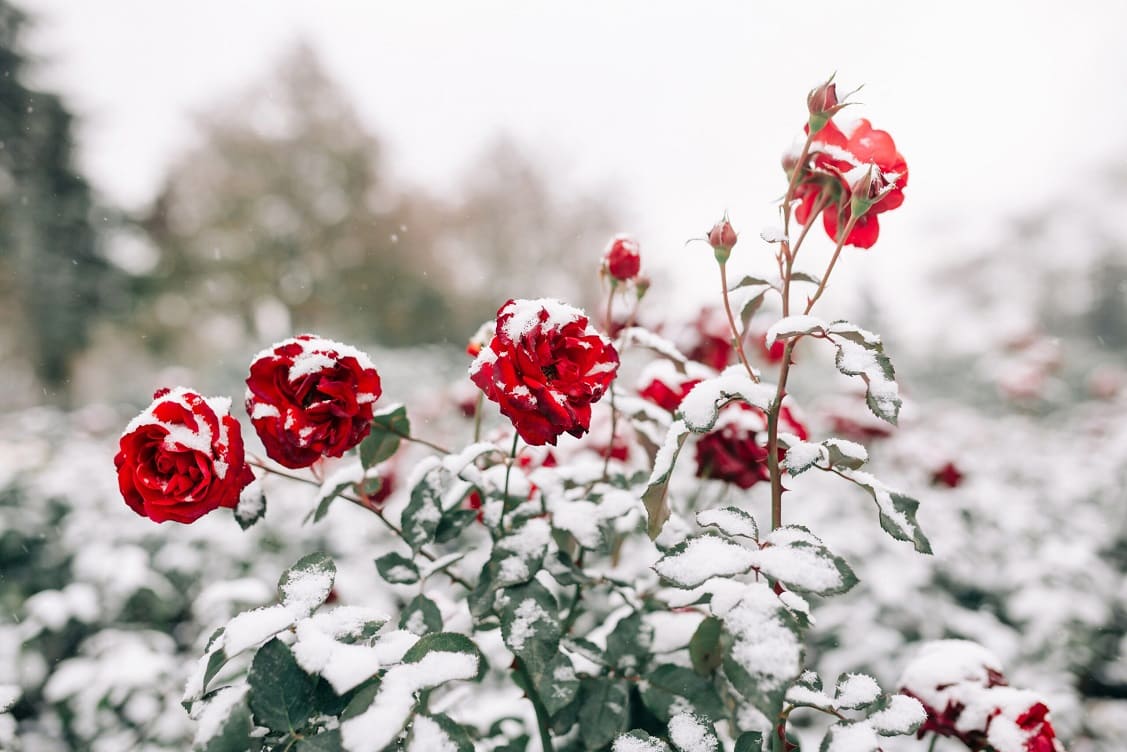Picture this: It’s a crisp February morning, and while your neighbors’ gardens lie dormant under a blanket of frost, yours is alive with color. Delicate snowdrops push through the snow, vibrant hellebores nod in the breeze, and the sweet fragrance of winter jasmine fills the air. Sound impossible? Think again.
If you’ve been accepting gray, lifeless gardens as an inevitable part of winter, you’re missing out on one of gardening’s best-kept secrets. Winter-blooming flowers aren’t just possible—they’re spectacular, offering beauty when you need it most.
Whether you’re battling the winter blues, looking to support early pollinators, or simply refuse to let your garden sleep for months, this guide will transform how you think about cold-season gardening.
👉 Discover 60+ Best Fragrant Plants & Flowers for Scented Gardens Every Season
Why Winter Gardens Matter More Than You Think
Winter gardens do more than just look pretty, though they certainly excel at that. These hardy bloomers serve as crucial lifelines for early-emerging pollinators like mason bees and overwintering bumblebees, who desperately need nectar sources when little else is available.
In fact, research shows that winter-active bumblebees are increasingly common due to climate changes, making these early nectar sources more important than ever.
Beyond their ecological importance, winter flowers offer something equally valuable: hope. There’s profound psychological benefit in watching life persist through the harshest conditions.
Studies have shown that exposure to nature, even in winter, can significantly reduce seasonal depression and improve overall wellbeing. Your winter garden becomes not just a feast for the eyes, but medicine for the soul.
Last winter, I watched a neighbor stop mid-jog to photograph my witch hazel, its spidery yellow blooms glowing against fresh snow. “I had no idea anything could bloom now,” she said, wonder in her voice. That moment of unexpected joy is exactly why winter gardens matter.
Understanding Your Growing Zone: The Foundation of Success
Before selecting any winter flowers, you need to understand your USDA Hardiness Zone. This system divides North America into 13 zones based on average annual minimum temperatures, with each zone representing a 10-degree Fahrenheit difference. Zone 1 is the coldest (below -50°F), while Zone 13 is the warmest (above 60°F minimum).
Finding your zone is simple: visit the USDA website and enter your zip code, or check with your local extension office. Once you know your zone, you can confidently select plants that will survive your winter temperatures.
Remember though, microclimates in your garden can create pockets that are slightly warmer or cooler than your overall zone. South-facing walls, for instance, might allow you to grow plants rated for one zone warmer, while low-lying frost pockets might require hardier selections.
Regional considerations go beyond just temperature zones. The Pacific Northwest’s mild, wet winters favor different plants than the Southeast’s variable conditions or the Northeast’s consistent cold.
Gardeners in the Southwest need to consider both cold hardiness and drought tolerance, while those in the Midwest must account for dramatic temperature swings.
👉 Learn about Desert Gardening for Beginners: Growing Food & Plants in Extreme Heat
The Science Behind Winter Magic
Understanding what makes winter flowers special helps you work with nature rather than against it. These remarkable plants have evolved fascinating adaptations that set them apart from their fair-weather cousins.
Through a process called cold acclimation or “hardening,” winter bloomers gradually build frost resistance as temperatures drop. Their cells produce natural antifreeze compounds—sugars and proteins that prevent damaging ice crystals from forming inside plant tissues.
It’s similar to how antifreeze in your car prevents the radiator from freezing, except this version is completely natural and food-safe for pollinators.
Many winter bloomers actually require cold exposure to trigger flowering, a process called vernalization. They essentially count cold days like a natural calendar, ensuring they bloom at the optimal time. This is why forcing bulbs indoors requires a period in the refrigerator—you’re mimicking winter to trigger their blooming response.
These plants also demonstrate remarkable efficiency, with slower metabolisms and specialized cells that function effectively in low light and cold conditions. They’re the marathon runners of the plant world—steady, efficient, and remarkably resilient.
Some, like hellebores, even have the ability to wilt dramatically during freezes to prevent ice damage, then spring back to life when temperatures rise.
Your Month-by-Month Blooming Calendar
Understanding when different plants bloom helps you plan for continuous color throughout the winter months. In the depth of December and January, early pioneers like hellebores begin their show with their rose-like blooms that can last for months.
Winter jasmine brightens bare walls with yellow stars, while snowdrops and winter aconite prove that even the smallest flowers can make the biggest impact when they’re the only show in town.
As February rolls into March, the main event begins. Crocuses carpet the ground in purple, yellow, and white, while daffodils trumpet the approaching spring. Primroses offer delicate clusters in every color imaginable, and cyclamen spread their butterfly-like blooms beneath trees.
Throughout these months, steady performers like camellias, winter heath, and pansies provide reliable color regardless of weather fluctuations.
The Complete Collection: 30+ Essential Winter Bloomers
From the aristocratic hellebores to the humble grape hyacinths, these thirty winter champions each bring unique qualities to the cold-season garden. Whether you’re seeking fragrance, color, structure, or wildlife value, this comprehensive collection offers options for every garden situation and personal preference.
Hellebores: The Aristocrats of Winter
Often called Christmas or Lenten roses, hellebores reign supreme in the winter garden. These sophisticated perennials produce blooms that last for months, aging gracefully from jewel tones to subtle antiqued shades.
Modern breeding has blessed us with upward-facing varieties that proudly display their intricate spotted patterns rather than hiding them beneath nodding heads.
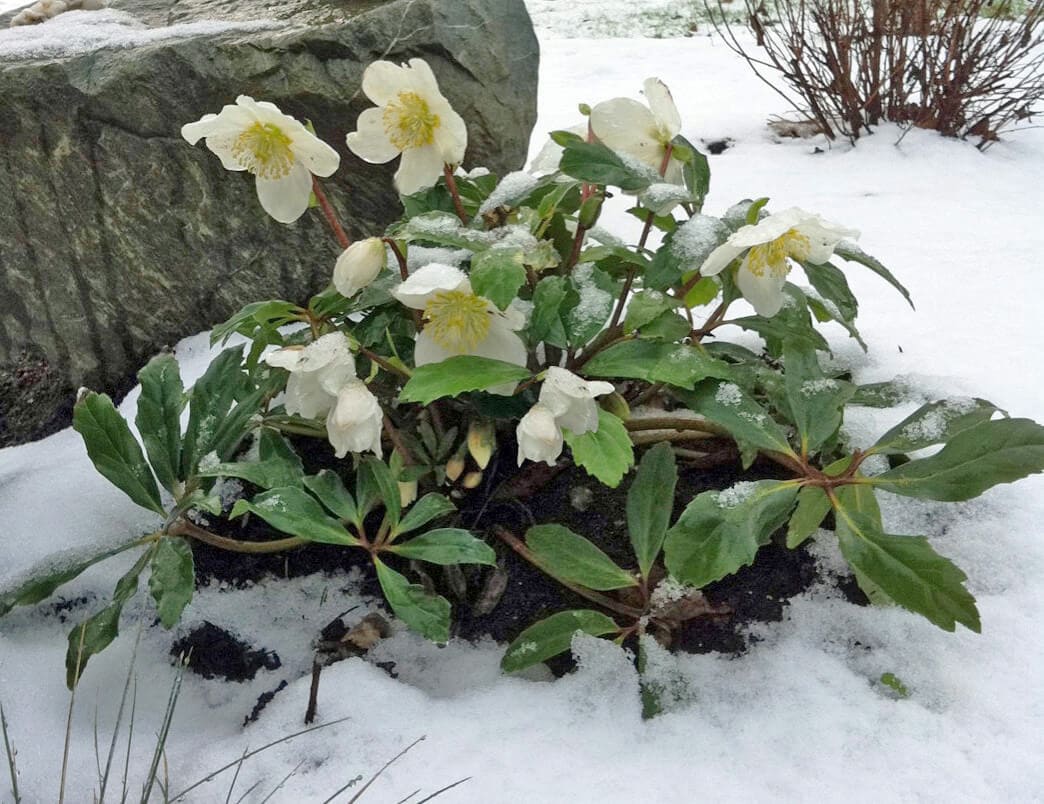
Plant hellebores in partial shade with rich, well-draining soil amended with compost. Once established, they’re remarkably drought-tolerant and virtually maintenance-free. The key to showcase their blooms is removing old foliage in late winter just as new flowers emerge.
Look for varieties from the ‘Winter Jewels’ series for stunning double blooms, or try ‘Pine Knot Strain’ for exceptional vigor and naturalizing ability.
Snowdrops: Promise Keepers in White
These diminutive bulbs earn their reputation as harbingers of spring by being absolutely first to bloom, sometimes pushing through snow as early as January. Their nodding white blooms might seem simple at first glance, but look closer and you’ll discover subtle green markings that vary by variety, making them surprisingly collectible.

The secret to establishing snowdrops is planting them “in the green”—while still actively growing rather than as dry bulbs. They naturalize beautifully under deciduous trees where they receive winter sun but summer shade.
Plant in drifts of at least 25 bulbs for impact, spacing them randomly for a natural look. Once established, they’ll multiply yearly, creating ever-expanding carpets of white.
Winter Jasmine: Architectural Sunshine
Unlike its intensely fragrant summer cousins, winter jasmine trades scent for incredible cold hardiness and months of bright yellow blooms on gracefully arching green stems. This is the plant that transforms ugly fences and bare walls into living art from December through March.
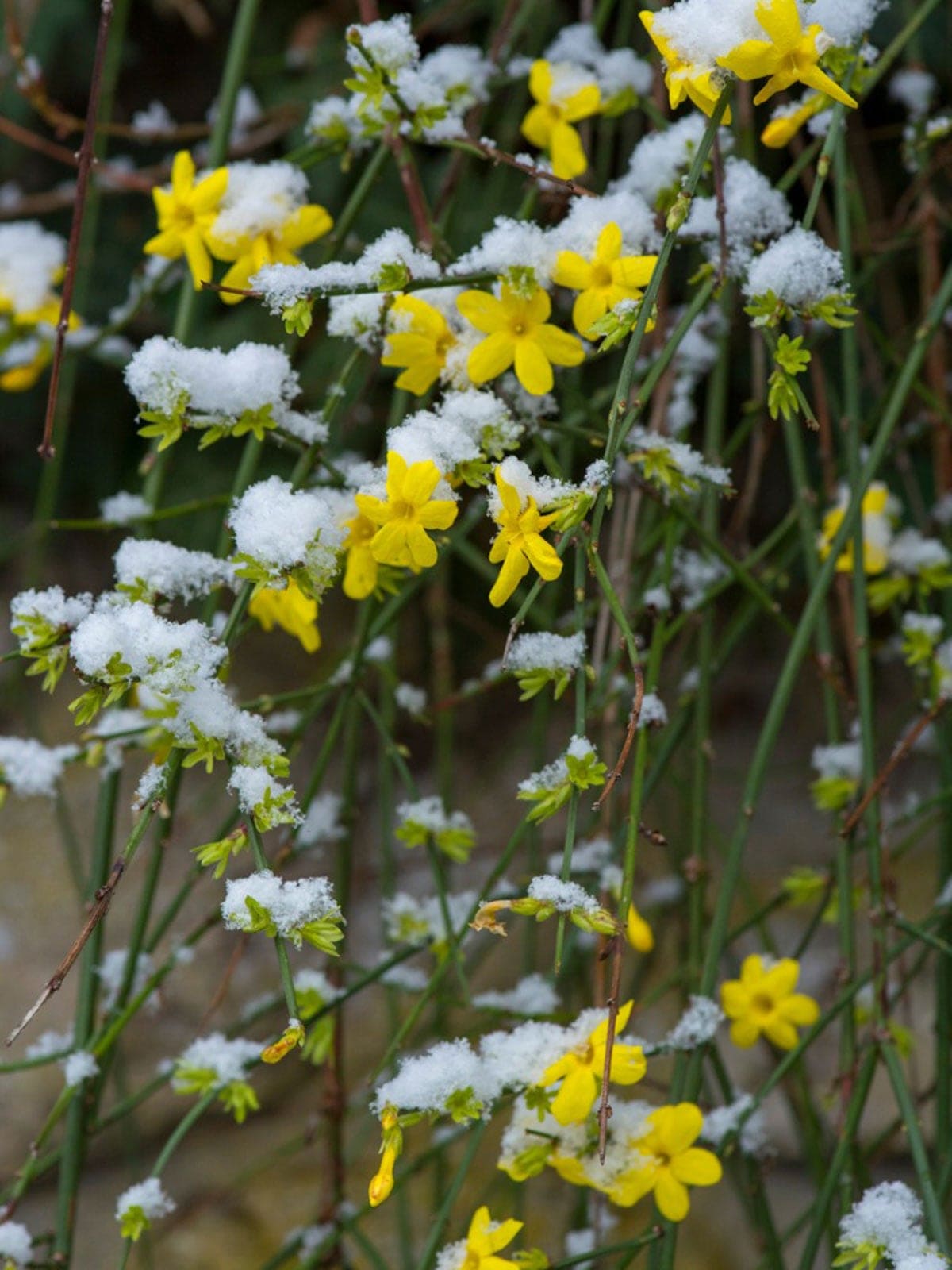
Its adaptability is legendary—thriving in sun or shade, trained vertically or cascading over walls. The green stems provide structure even when not in bloom, and the plant requires virtually no care beyond occasional pruning immediately after flowering.
Try training it along a north-facing fence where little else will bloom, or let it cascade down a retaining wall for a waterfall of yellow.
Witch Hazel: Nature’s Fireworks
Few plants create as much winter drama as witch hazel. Its spider-like flowers appear on bare branches in yellow, orange, or red, looking like botanical fireworks frozen in time. On warm winter days, their spicy-sweet fragrance can perfume an entire garden, drawing you outside even in cold weather.

These eventually become large shrubs or small trees, so placement is crucial. Site them where winter sun will backlight the blooms—the effect is magical. The fragrance is strongest on mild days, and cut branches brought indoors will perfume your entire house.
Native varieties bloom latest but are most cold-hardy, while Asian species and hybrids offer more color variety.
Camellias: Roses When There Are No Roses
These evergreen shrubs prove that winter flowers can be just as glamorous as summer blooms. From December through April, depending on variety, camellias produce hundreds of rose-like flowers in shades from pure white through pink to deep burgundy.
Some newer varieties are surprisingly cold-hardy, expanding their range well beyond the traditional South.
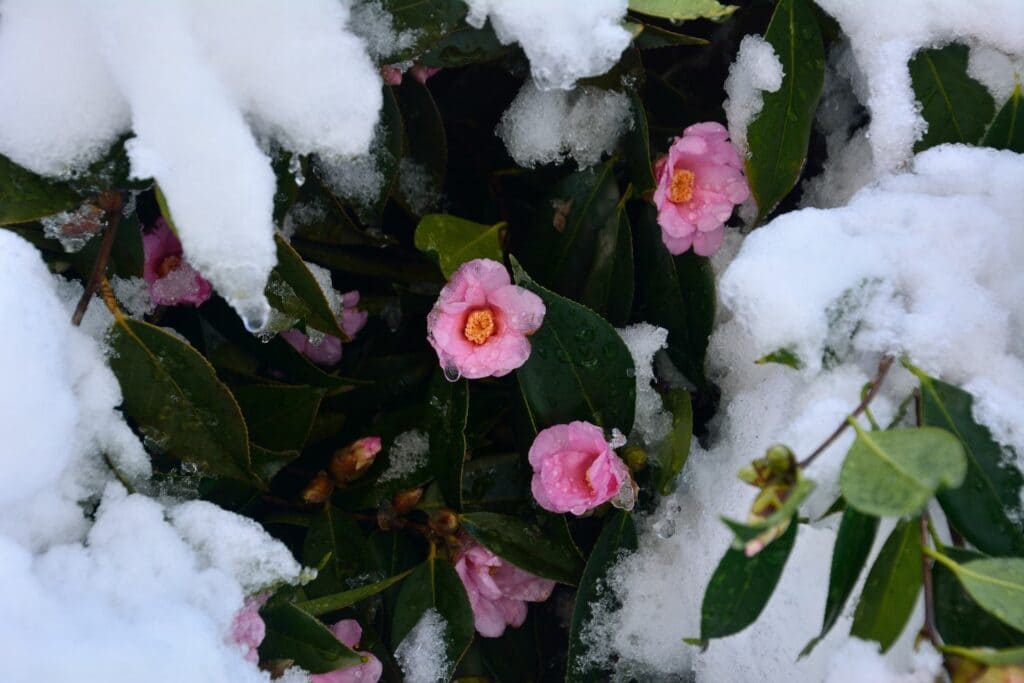
Success with camellias requires understanding their needs. They prefer morning sun with afternoon shade, consistent moisture without waterlogging, and acidic soil with pH between 5.5 and 6.5.
If your soil is alkaline, grow them in containers with acidic potting mix. Mulch heavily to maintain moisture and soil temperature consistency. In zones 7-9, combine fall-blooming sasanqua types with winter-blooming japonica varieties for five continuous months of flowers.
Winter Aconite: Golden Carpets of Cheer
These cheerful yellow buttercups create stunning golden carpets in late winter, multiplying freely once established. They’re among the few bulbs that actually prefer heavy clay soil, making them perfect for gardeners struggling with difficult conditions. The glossy yellow petals seem to capture and reflect every ray of weak winter sunshine.
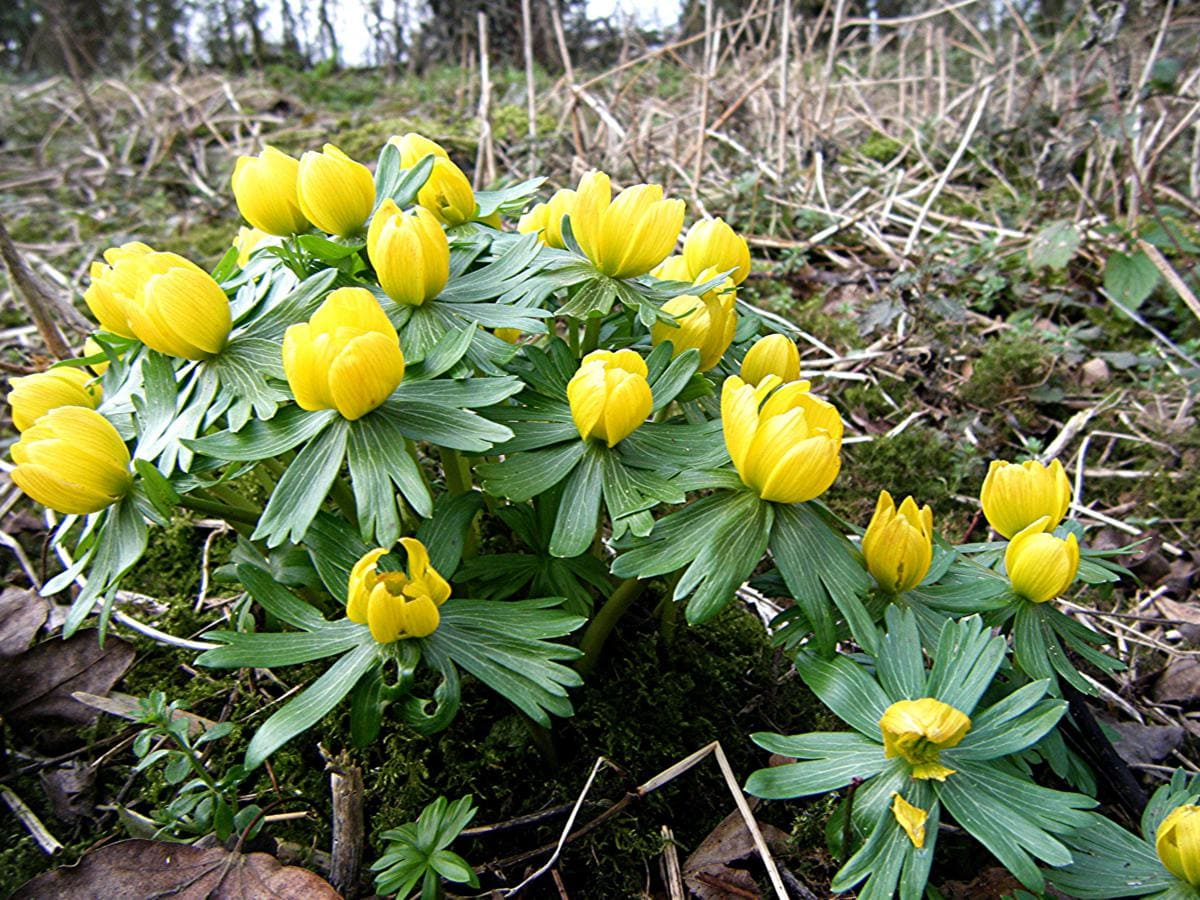
Soak the hard, dry tubers overnight before planting to improve germination. They prefer cool, moist conditions and will go completely dormant in summer heat—mark their location to avoid accidentally disturbing them. They look spectacular combined with snowdrops and early crocuses, creating a tapestry of yellow and white.
Pansies and Violas: The Indomitable Spirits
Don’t let their delicate appearance fool you—these annuals are tougher than they look. Available in every color imaginable, from nearly black to pure white with every shade in between, they bloom continuously through mild winters and bounce back from freezes that would destroy other flowers. Their cheerful “faces” seem to smile even when covered with frost.

For best results, plant in fall when soil is still warm, allowing roots to establish before cold weather. In zones 7 and warmer, they’ll bloom all winter. In colder areas, they may pause during the coldest months but return with enthusiasm in early spring.
Deadhead regularly and feed monthly with half-strength liquid fertilizer to maintain continuous blooming. Starting from seed in late summer gives you hundreds of plants for the price of a single market pack.
Hardy Cyclamen: Woodland Jewels
Different from the florist cyclamen sold as houseplants, hardy cyclamen are tough perennials that create elegant groundcovers in shady spots where little else blooms in winter. Their swept-back petals dance above marbled foliage that’s almost as ornamental as the flowers themselves.
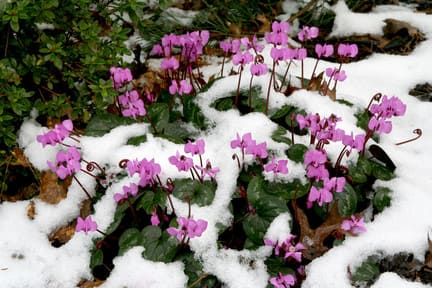
Plant corms just below the soil surface in well-draining soil amended with leaf mold. They need excellent drainage—in heavy soils, add coarse sand or grit. Once established, let them self-seed to create natural colonies. They’re perfect under deciduous trees combined with hellebores and snowdrops, creating a woodland tapestry that looks completely natural.
Primroses: The Cottage Garden Classics
These cheerful perennials offer more color variety than almost any other winter bloomer. From deep burgundy through every shade of pink, yellow, purple, and pure white, often with contrasting eyes or edges, primroses bring cottage garden charm to the winter landscape.
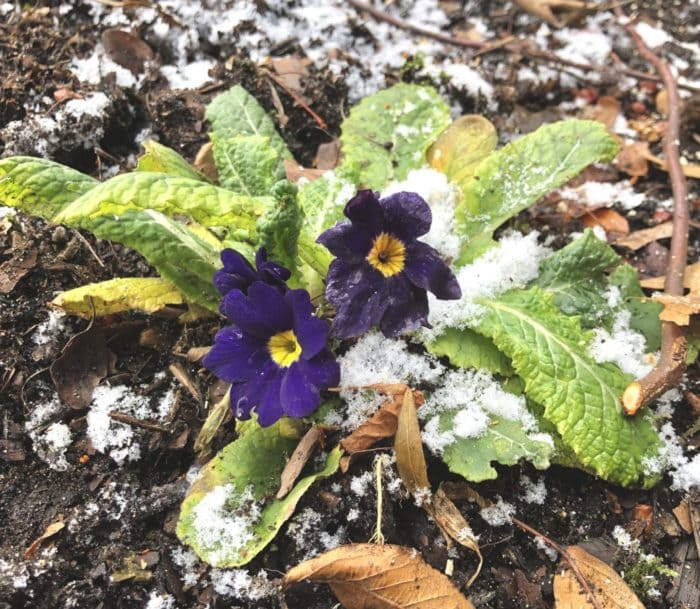
They thrive in consistently moist but not waterlogged soil, preferring partial shade in most climates. Divide clumps every two to three years in spring to maintain vigor and increase your stock.
For instant impact, mass plant in decorative containers near entryways where their bright colors can lift spirits on gray days. The variety ‘Gigha’ is particularly valuable, producing pure white flowers for months without the constant division many primroses require.
Mahonia: Architectural Wonder with Benefits
These dramatic evergreen shrubs offer year-round structure with their holly-like leaves, but truly shine in winter when fragrant yellow flower sprays emerge, followed by blue-black berries that birds devour. The honey-scented flowers appear just when pollinator food sources are scarcest.
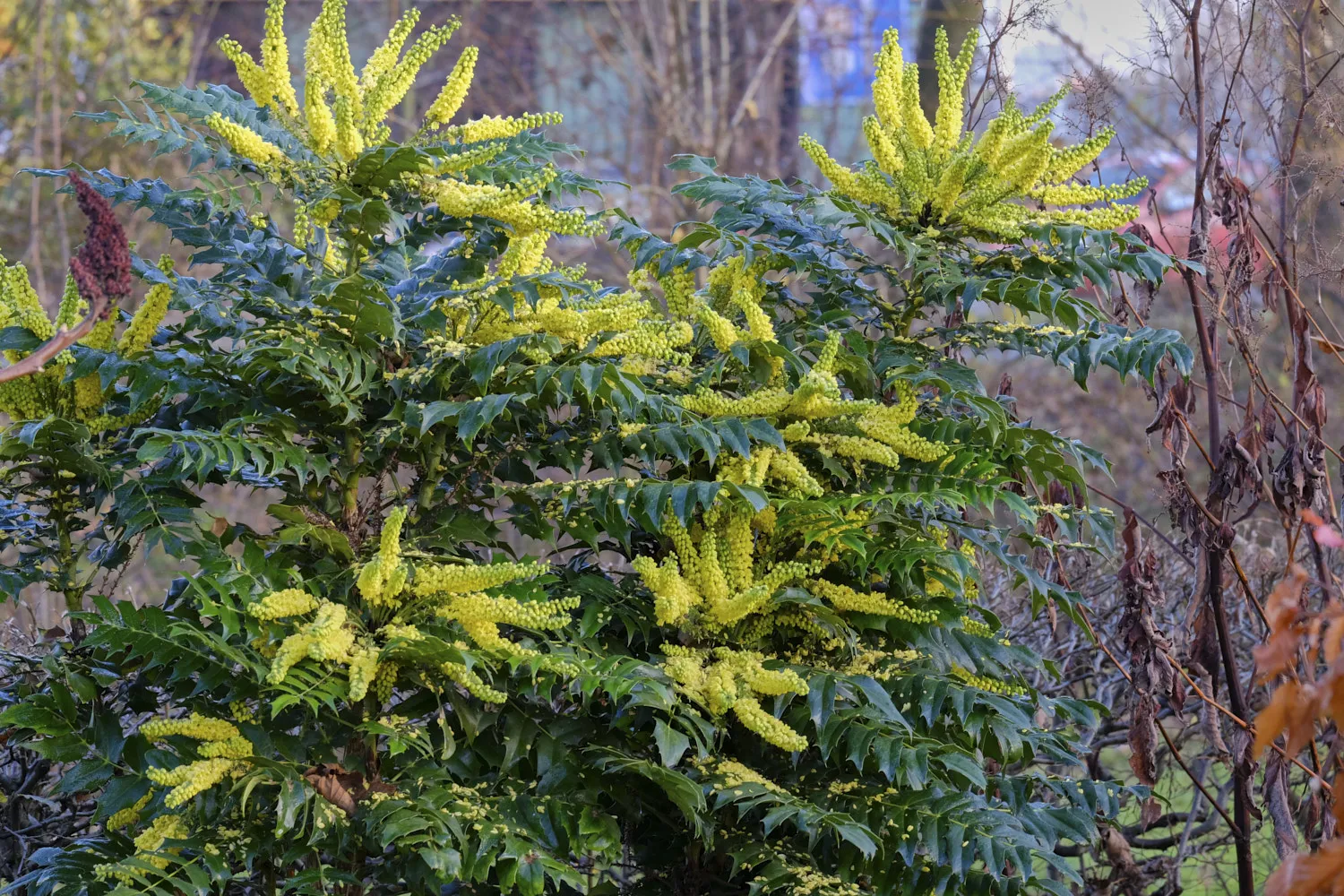
Incredibly tough once established, mahonia tolerates dry shade where little else will grow. It needs no supplemental watering after the first year and requires minimal pruning.
Position it where you can appreciate its architectural form year-round and enjoy watching birds feast on the berries. The variety ‘Winter Sun’ is particularly floriferous with an upright habit perfect for smaller gardens.
Winter-Blooming Irises: Miniature Masterpieces
While most irises sleep until spring, Iris reticulata and Iris unguicularis brave winter weather with style. The miniature Iris reticulata offers intricate patterns in jewel tones, while Iris unguicularis produces larger, fragrant flowers perfect for cutting.
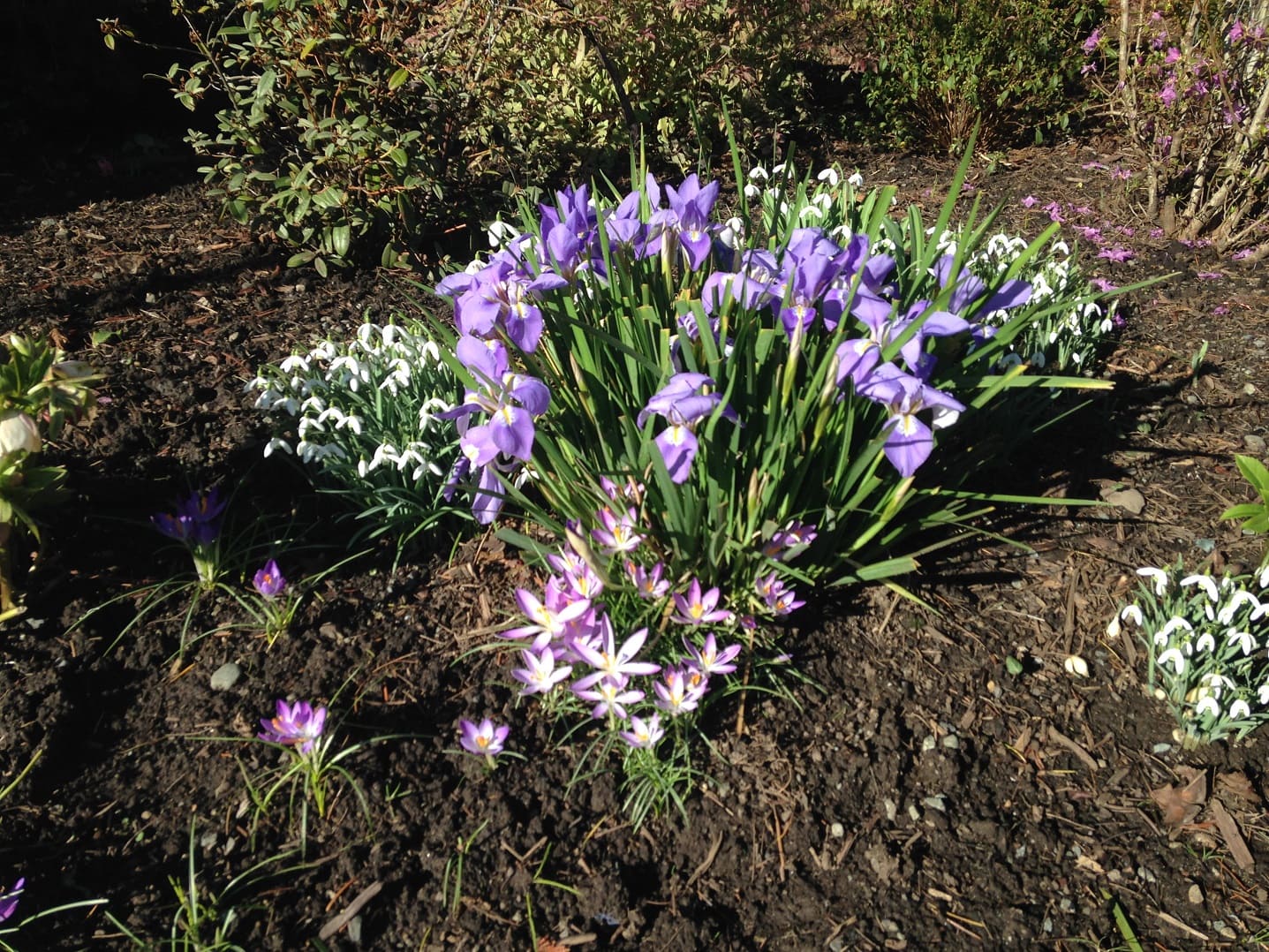
Both require excellent drainage—they’ll rot in waterlogged soil. Plant Iris reticulata bulbs three inches deep in fall for late winter blooms. Iris unguicularis prefers a hot, dry summer position against a sunny wall where it can bake, then rewards you with months of winter flowers. The variety ‘Mary Barnard’ is particularly generous with its violet blooms.
Daphne: The Fragrance Queen
No winter flower matches daphne’s intoxicating perfume. Just a few open blooms can scent an entire garden, and bringing a small sprig indoors will perfume your whole house. The waxy pink or white flowers cluster at branch tips, looking almost too perfect to be real.
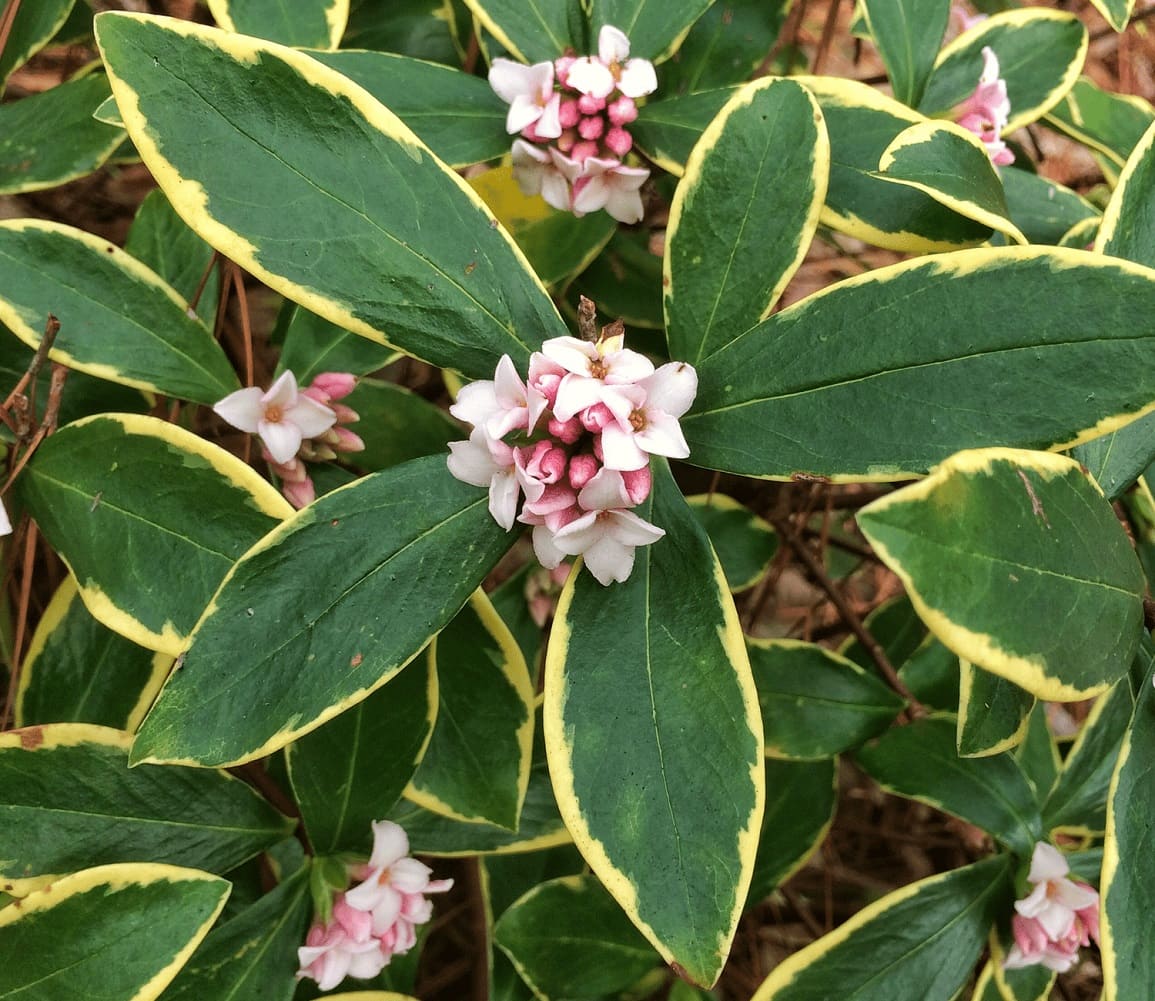
Admittedly finicky, daphne rewards careful siting with years of beauty. Perfect drainage is absolutely essential—they’ll die quickly in waterlogged soil. Never attempt to move established plants as they resent root disturbance.
Site them near pathways or windows where you’ll appreciate their fragrance. Despite their reputation, once you find the right spot, they’re surprisingly long-lived.
Winter Heath: Living Carpets
These low-growing evergreens completely cover themselves with tiny bell-shaped flowers for weeks at a time, creating solid carpets of color when little else dares bloom. Available in white, pink, and deep rose, they’re perfect for edging paths or filling space between larger shrubs.
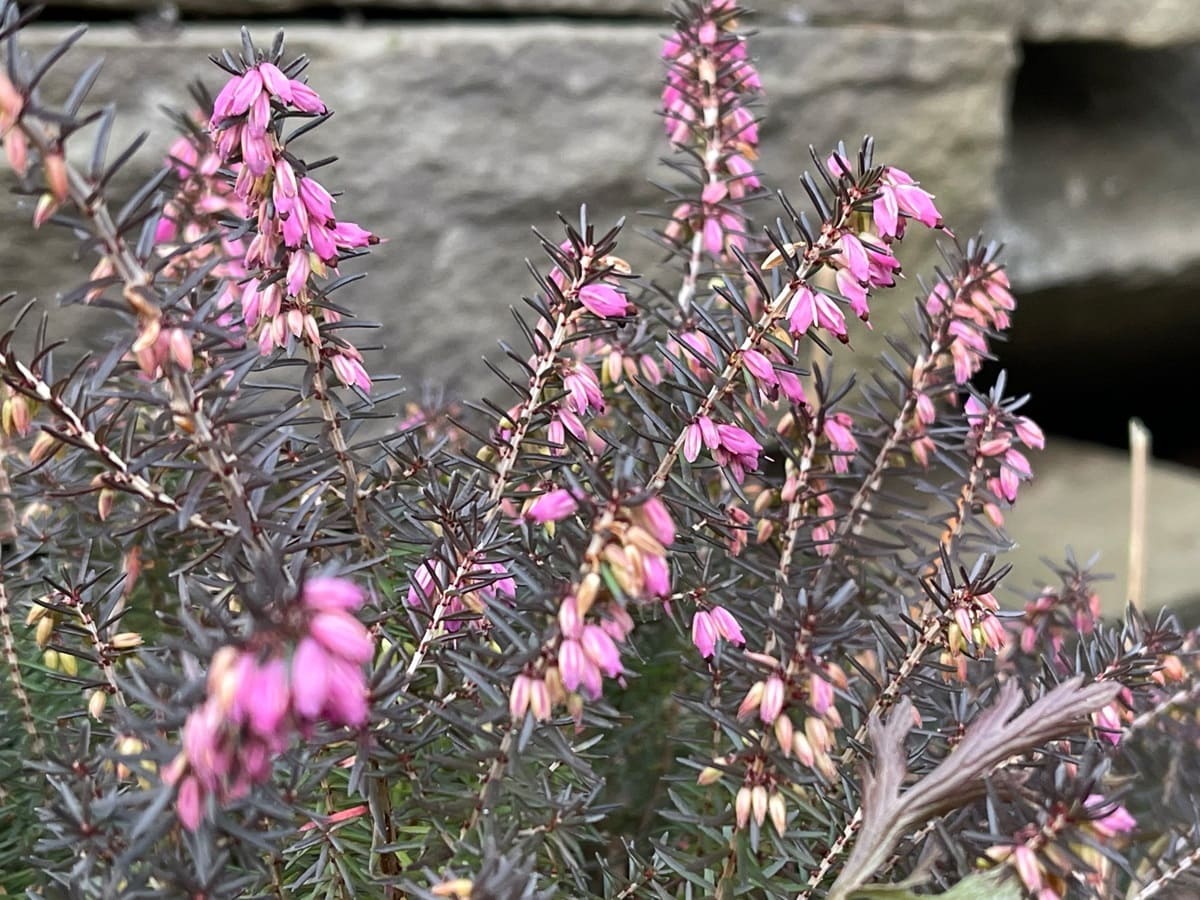
Winter heath prefers acidic soil and good drainage but tolerates more cold than most heathers. Shear lightly after blooming to maintain compact growth and encourage next year’s flowers. They make excellent companions for other acid-lovers like camellias and pieris, functioning as a living mulch that suppresses weeds while adding color.
Pieris: Four-Season Elegance
Also called lily-of-the-valley shrub, pieris offers something special every month of the year. In winter, chains of bell-shaped flowers dangle like elaborate earrings. Come spring, brilliant red new growth emerges, and the evergreen foliage provides structure year-round.
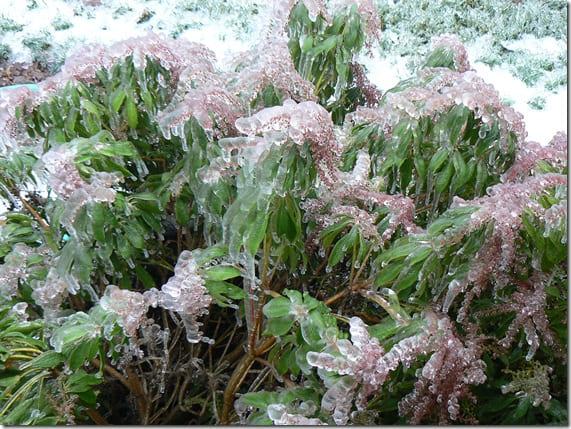
These shrubs prefer acidic soil and protection from harsh winds but are otherwise undemanding. They need minimal pruning and are rarely bothered by pests or diseases. The compact variety ‘Little Heath’ stays under four feet, perfect for smaller gardens, while ‘Mountain Fire’ offers the most dramatic red new growth.
Flowering Quince: Bold Spring Preview
While technically blooming in late winter to early spring, flowering quince deserves mention for its weeks of apple-blossom-like flowers on bare, thorny branches. Available in coral, pink, white, and red, these tough shrubs laugh at cold weather and poor soil.
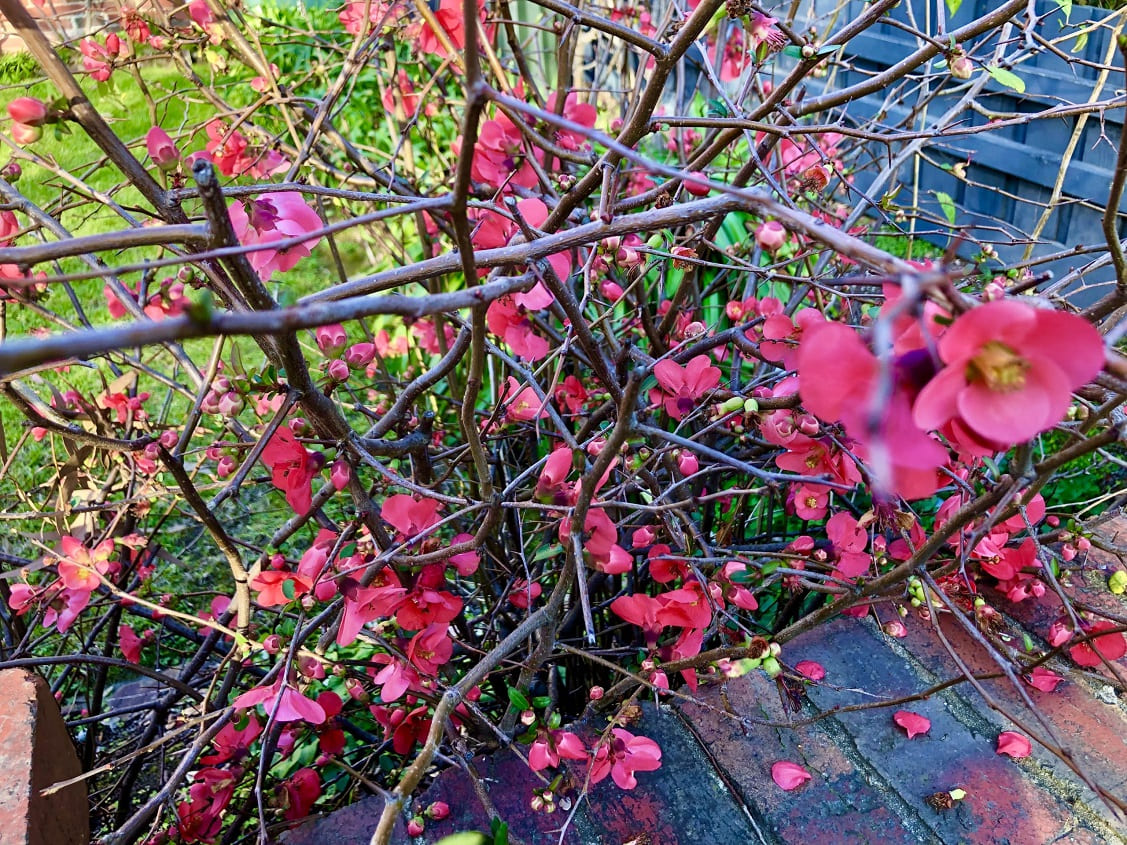
Extremely adaptable and drought-tolerant once established, quince needs only proper pruning immediately after flowering to maintain shape. As a bonus, the fruit that follows can be made into delicious jellies and preserves. The variety ‘Toyo Nishiki’ produces multiple flower colors on the same plant—a real conversation starter.
Winter Honeysuckle: Hidden Fragrance Champion
Often overlooked for showier plants, winter honeysuckle (Lonicera fragrantissima) might not win beauty contests, but it triumphs in the fragrance department. The small, creamy-white flowers appear on bare branches from December through March, releasing a lemony-sweet scent that can stop you in your tracks on mild winter days.
This shrub reaches six to ten feet with an informal, spreading habit that suits cottage gardens perfectly. It tolerates almost any soil and thrives in partial shade, making it ideal for difficult spots.
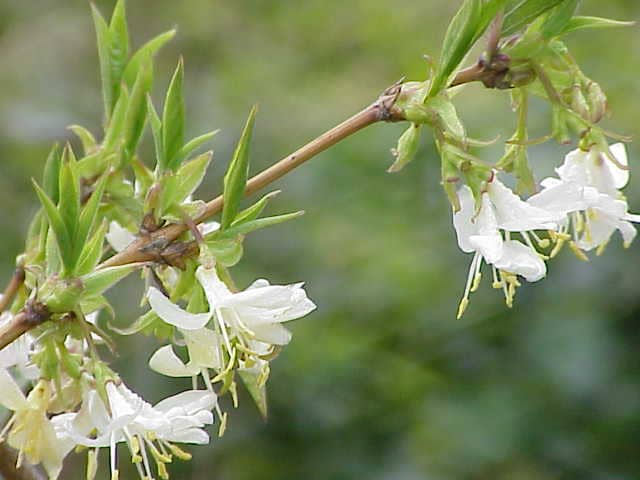
The flowers, though small, are magnets for early pollinators, and the red berries that follow feed birds through spring. Plant it near a path or window where you’ll catch its perfume—you won’t see it from a distance, but you’ll definitely smell it.
Sweet Box: The Shade Garden’s Secret Weapon
Sarcococca, commonly called sweet box, proves that the best things come in small packages. This compact evergreen shrub produces tiny white flowers from January through March that pack an incredible vanilla-honey fragrance completely disproportionate to their size. Just one plant can perfume an entire garden on still winter days.
Growing just three to four feet tall, sweet box thrives in deep shade where almost nothing else blooms. It’s perfect for narrow spaces between buildings, under trees, or along north-facing foundations.
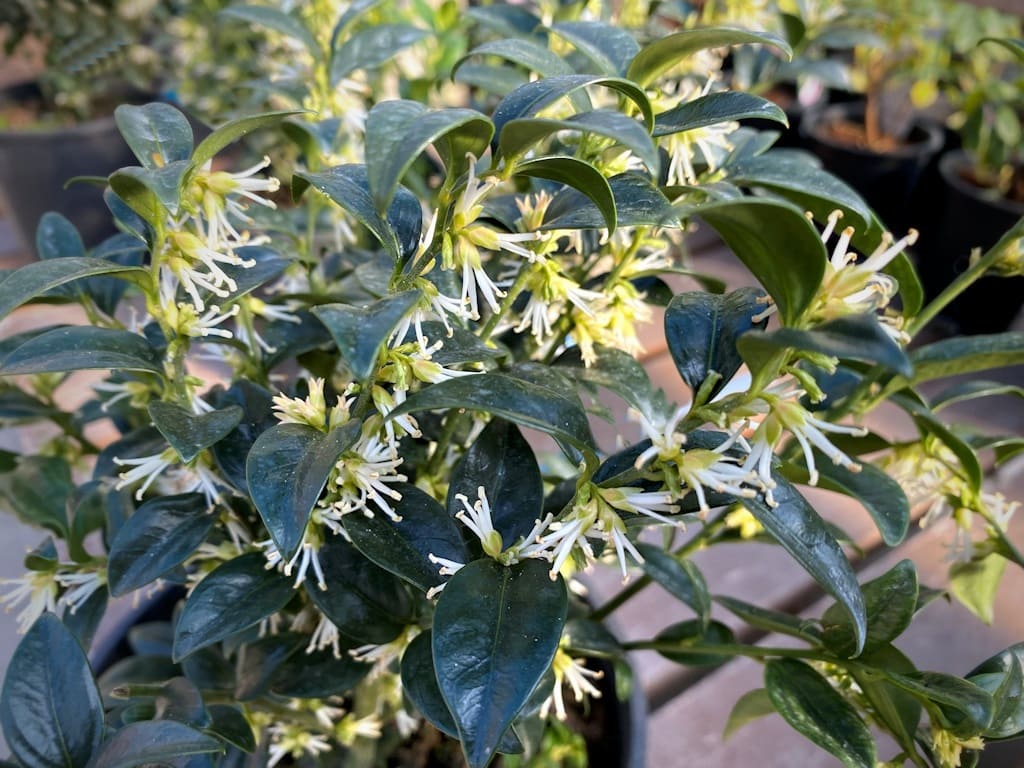
The glossy evergreen leaves provide year-round structure, and black berries follow the flowers. Varieties like ‘Fragrant Valley’ stay especially compact while Sarcococca hookeriana var. digyna offers the strongest fragrance.
Glory of the Snow: Nature’s Blue Carpet
Chionodoxa creates one of winter’s most spectacular displays when naturalized in large drifts. These small bulbs produce star-shaped flowers in brilliant blue with white centers, though pink and pure white varieties exist. Blooming in late February through March, they bridge the gap between the earliest bulbs and spring’s main show.
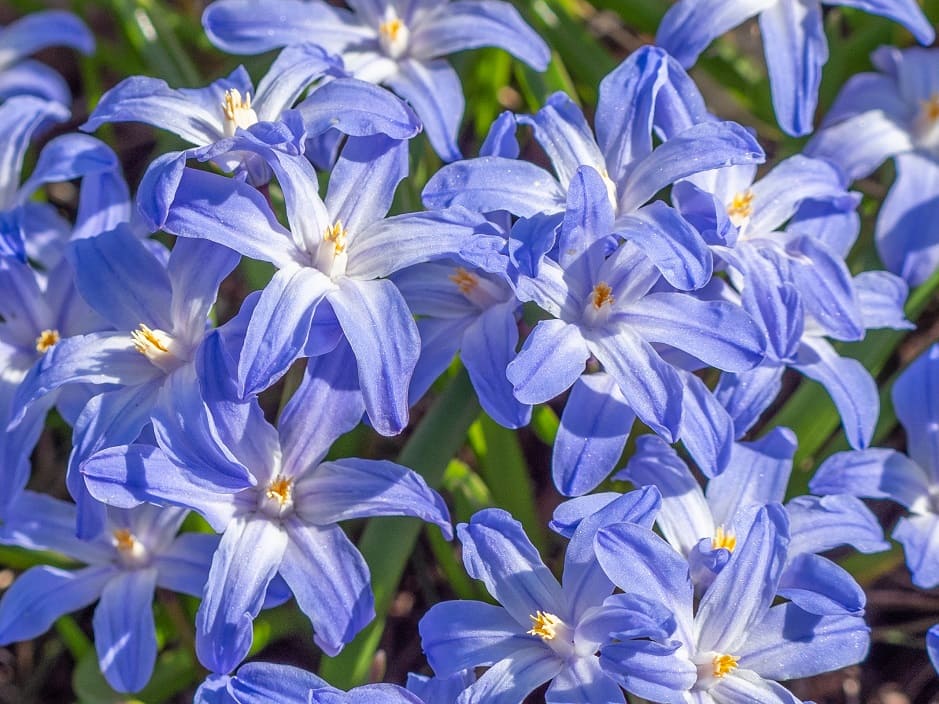
The secret to success with glory of the snow is mass planting—think hundreds, not dozens. They’re inexpensive when bought in bulk and naturalize readily in lawns, under trees, or in rock gardens.
Unlike many bulbs, they tolerate some summer moisture and don’t need bone-dry conditions when dormant. Plant them with winter aconite and early crocuses for a tapestry effect that looks completely natural.
Winter-Flowering Clematis: Evergreen Surprise
Clematis cirrhosa breaks all the rules you thought you knew about clematis. This evergreen vine blooms from November through February when its deciduous cousins are bare sticks. The nodding, bell-shaped flowers are cream-colored with maroon speckles inside, followed by attractive silky seed heads that persist into spring.
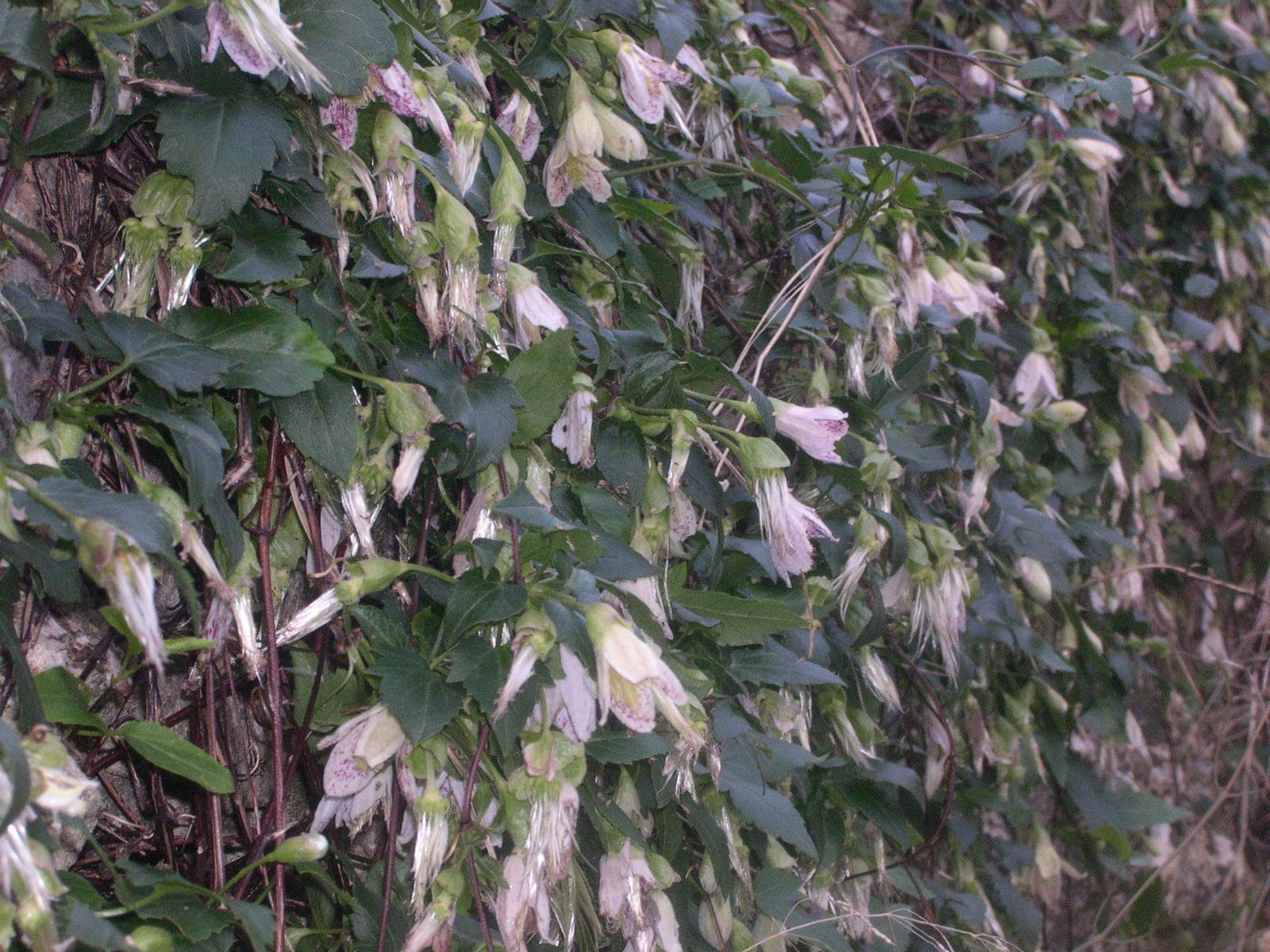
Unlike summer clematis, this Mediterranean native needs no pruning and actually prefers lean soil and minimal water once established. It’s perfect for growing through winter-blooming shrubs or over arbors where the ferny evergreen foliage provides year-round screening.
The variety ‘Freckles’ has particularly heavy spotting, while ‘Jingle Bells’ offers larger, pure cream flowers. In cold climates, provide protection from harsh winds.
Winterberry Holly: Berries as Bright as Flowers
While not technically flowering in winter, winterberry holly (Ilex verticillata) deserves inclusion for its spectacular berry display that rivals any flower for impact. This deciduous holly drops its leaves in fall to reveal branches absolutely loaded with bright red berries that persist through winter, creating stunning effects against snow.
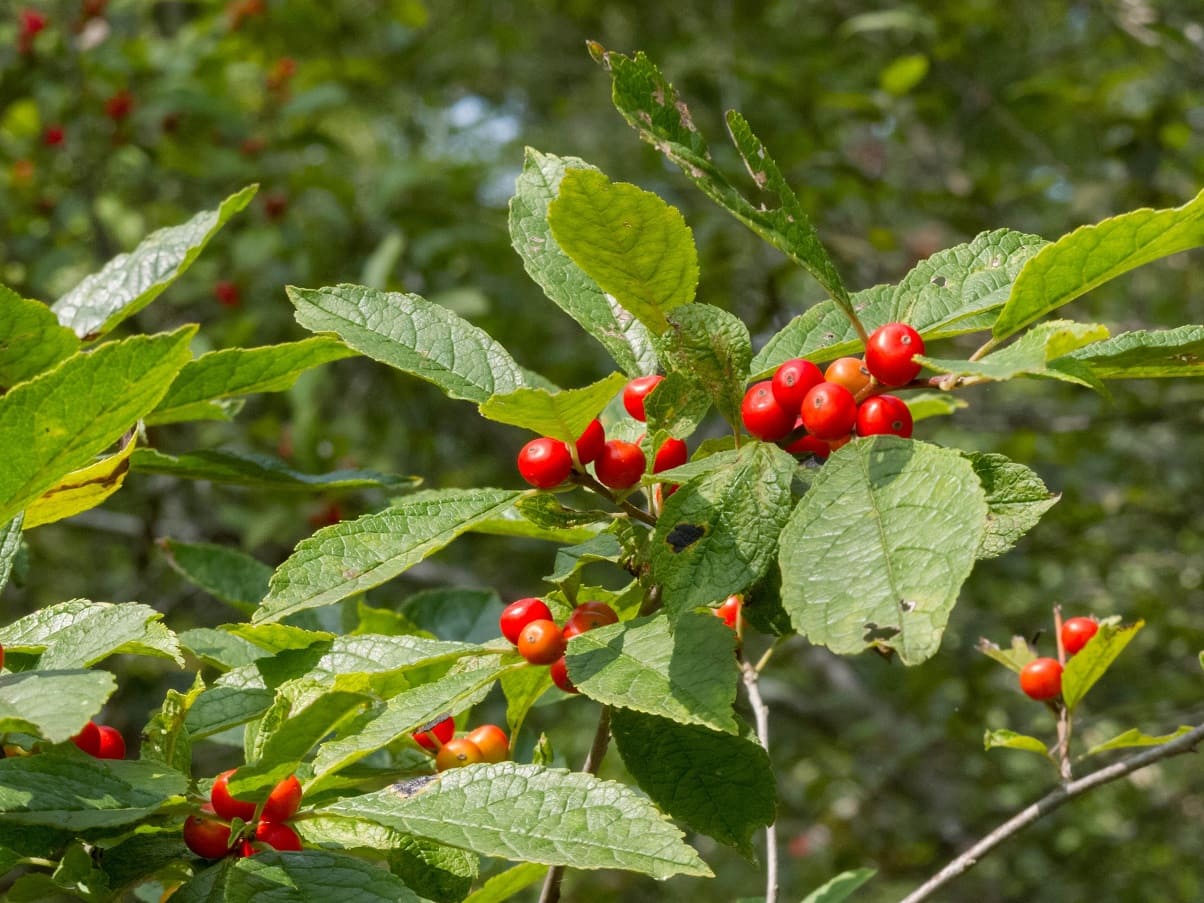
The key to success is planting both male and female plants—only females produce berries, but they need a male pollinator within 50 feet. One male can pollinate multiple females.
‘Winter Red’ and ‘Winter Gold’ (with orange berries) are excellent female varieties, while ‘Southern Gentleman’ is a reliable male. The berries feed birds through winter, though cedar waxwings can strip a bush in hours when they arrive in flocks.
Scilla: Sapphire Sparkles
Siberian squill (Scilla siberica) brings intense blue color to the late winter garden when most other flowers are white, yellow, or pink. These small bulbs produce nodding, bell-shaped flowers on four to six-inch stems, creating rivers of blue when naturalized in large numbers.
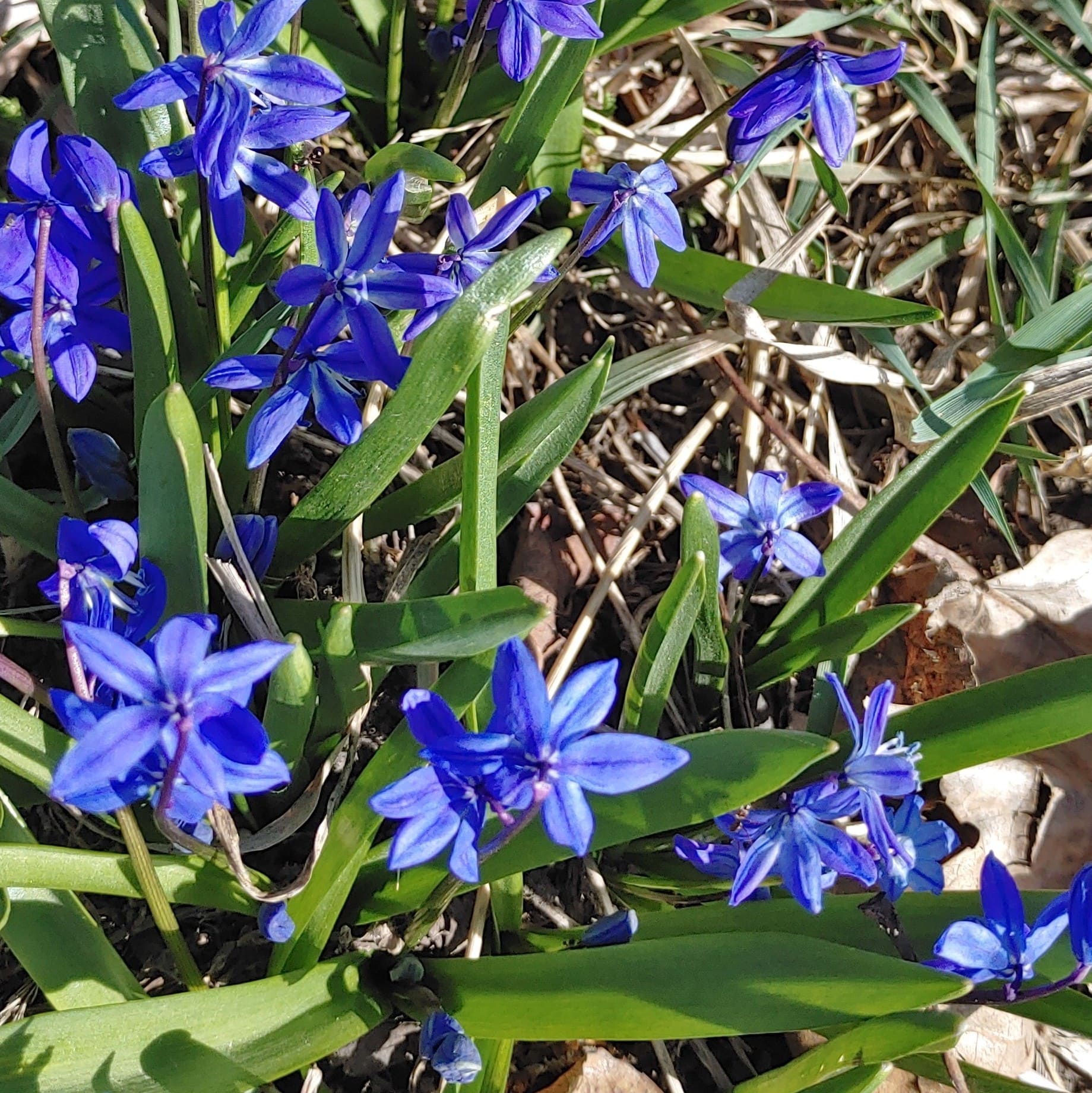
Incredibly easy to grow, scilla tolerates more shade than most bulbs and naturalizes aggressively—plant them only where you want them to spread. They’re perfect for planting under shrubs, in woodland gardens, or allowed to naturalize in lawns that aren’t treated with chemicals.
The variety ‘Spring Beauty’ has larger, deeper blue flowers, while ‘Alba’ offers pure white blooms for those seeking a monochromatic scheme.
Crocus: The Full Spectrum
While mentioned earlier, crocuses deserve expanded coverage for their incredible variety. Beyond the common purple Dutch crocus, there are species that bloom from November through March in every color except true red.

Crocus tommasinianus, the tommy crocus, naturalizes better than any other, creating lavender carpets in late winter. Crocus chrysanthus varieties like ‘Cream Beauty’ and ‘Blue Pearl’ offer subtle colors with delightful perfume.
For something special, try Crocus sieberi ‘Tricolor’ with its three-toned purple, white, and yellow flowers, or the autumn-blooming Crocus speciosus that extends the season at winter’s beginning.
Plant different species for four months of crocus blooms. Remember that crocuses close on cloudy days and at night, so plant them where you’ll see them during sunny periods.
Cornelian Cherry: Tree-Scale Impact
Cornus mas, the Cornelian cherry, proves that winter-blooming trees exist beyond witch hazel. This large shrub or small tree explodes with tiny yellow flowers on bare branches in late February, creating a golden cloud effect visible from hundreds of feet away. The blooms last for weeks and are followed by edible red fruits that make excellent preserves.
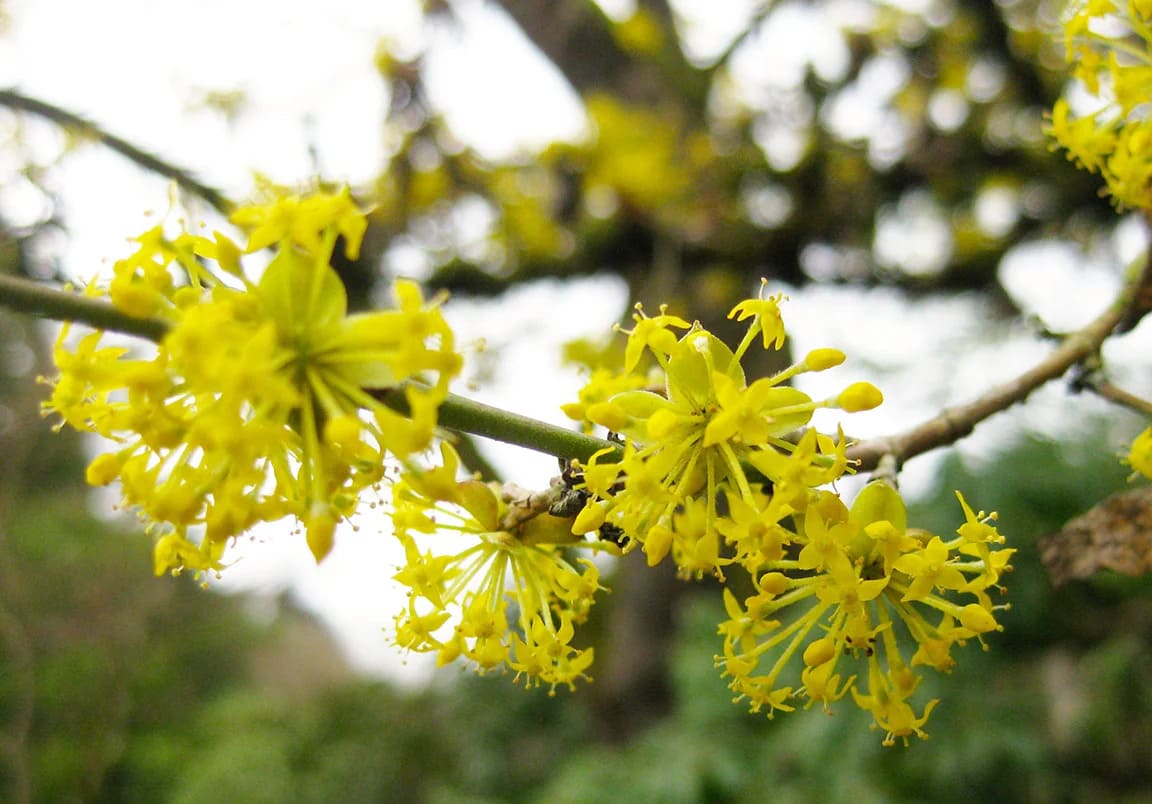
Growing 15 to 20 feet tall with equal spread, this is a plant for larger gardens where it can develop its full potential. It tolerates urban conditions, clay soil, and drought once established.
The variety ‘Golden Glory’ has particularly profuse flowering, while ‘Variegata’ adds white-edged leaves for summer interest. Use it as a specimen or in a mixed border where its early flowers can shine before leaves emerge.
Edgeworthia: The Paper Bush Phenomenon
Also called Chinese paper bush, Edgeworthia chrysantha creates winter magic with its unusual silky flower buds that open to reveal clusters of tubular yellow flowers with white exteriors. Blooming on bare branches from January through March, the flowers release a powerful sweet fragrance reminiscent of gardenia.
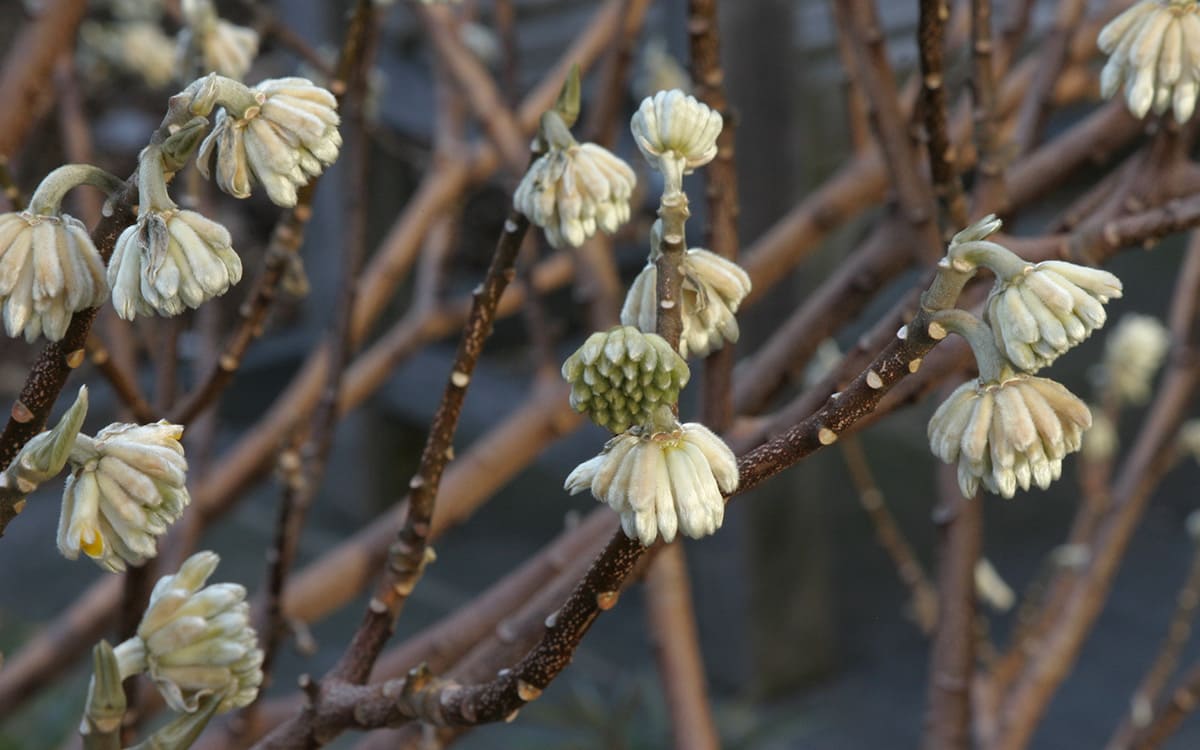
This shrub needs protection in zones colder than 7, but it’s worth the effort. The tropical-looking leaves emerge after flowering, creating a bold texture through summer. Site it in partial shade with rich, moist soil and protection from harsh winds.
The coveted variety ‘Akebono’ has orange-red flowers but is harder to find. Where marginally hardy, grow it against a warm wall or in a large container that can be protected during extreme cold.
Bergenia: Elephant Ears in Winter
Often grown for its bold, cabbage-like foliage, bergenia surprises many gardeners by producing clusters of pink, white, or magenta flowers from January through March in mild climates. The leathery leaves turn burgundy or purple in cold weather, adding another dimension of winter interest.

These tough perennials tolerate conditions that defeat other plants—dry shade, root competition, and poor soil. They’re perfect for edging paths where their evergreen presence provides structure year-round.
‘Winterglut’ has particularly good winter leaf color and deep pink flowers, while ‘Bressingham White’ offers pure white blooms against green foliage. Divide clumps every few years to maintain flowering vigor.
Ornamental Kale and Cabbage: Living Bouquets
These annual “flowers” aren’t flowers at all, but their ruffled, colorful leaves create rose-like rosettes that become more vibrant as temperatures drop. Available in combinations of white, pink, purple, and green, they provide structure and color from fall through winter until hard freezes finally defeat them.

Unlike their edible cousins, ornamental varieties are bred for looks, not taste, though they’re technically edible if rather bitter. They’re perfect for containers, formal bedding displays, or filling gaps in perennial borders.
The ‘Pigeon’ series offers frilly leaves, while ‘Osaka’ types have smoother, more cabbage-like foliage. Plant in fall when temperatures cool—they’ll sulk in warm weather but shine when mercury drops.
Grape Hyacinth: Early Purple Profusion
Muscari, commonly called grape hyacinth, begins blooming in late winter with clusters of tiny, grape-like flowers in shades of blue, purple, white, and even pink. The fragrance is subtle but sweet, especially noticeable when planted in masses. These bulbs are among the most reliable for naturalizing, spreading readily but not aggressively.
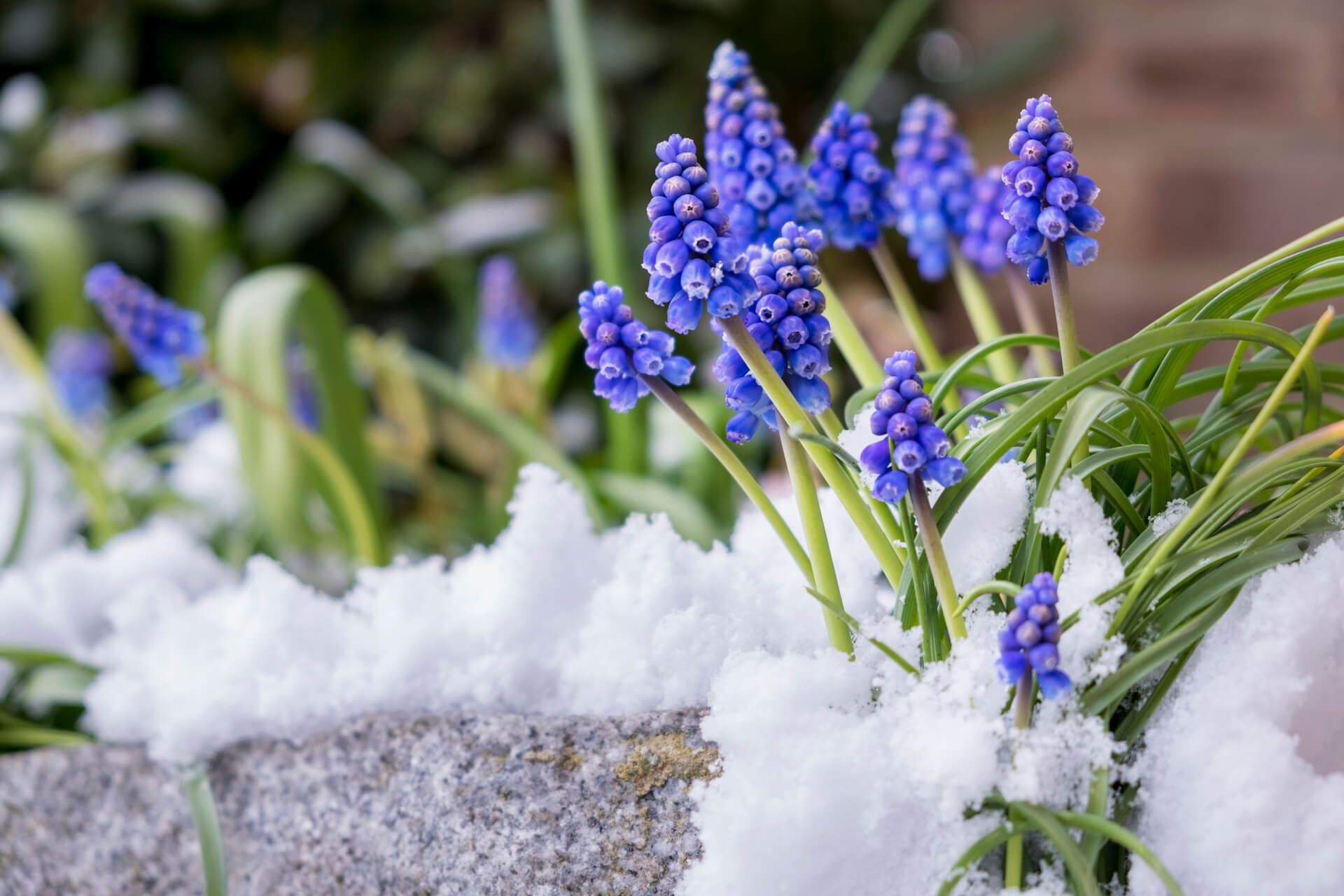
The variety ‘Valerie Finnis’ offers unusual pale blue flowers, while ‘Album’ provides pure white blooms. For something different, try Muscari latifolium with its bi-colored blue and purple flowers.
Plant them along pathways, under roses, or let them naturalize in lawns. The grassy foliage appears in fall and persists through winter, providing green when little else does.
Calendula: Winter Sun in Mild Climates
In zones 9-11, calendula (pot marigold) blooms throughout winter, bringing sunshine-yellow and orange flowers to the garden when most annuals have long since departed. These easy-to-grow annuals self-sow readily, ensuring future generations without replanting. The edible petals add color to winter salads and have traditional medicinal uses.
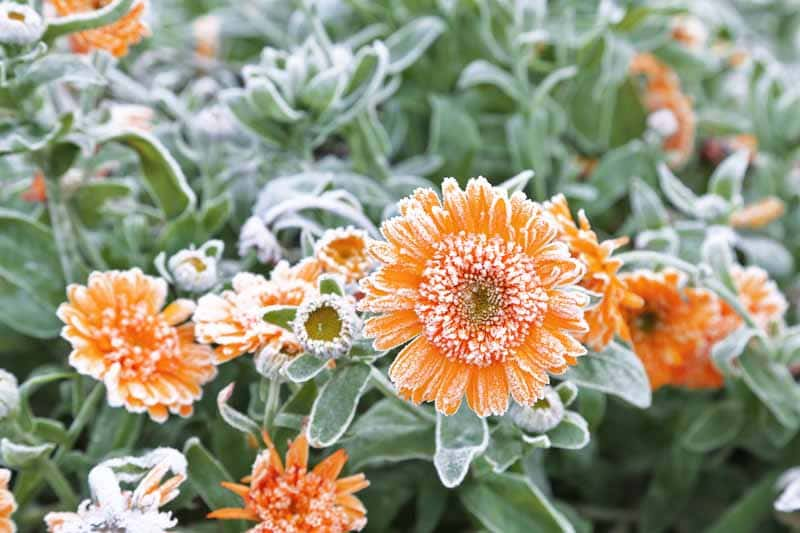
Even in colder zones, calendula often survives light frosts, extending the season into early winter and starting again in very early spring. They prefer cool weather and will stop blooming when temperatures rise above 70°F.
The variety ‘Winter Wonders’ was specifically bred for cold-season performance, while ‘Snow Princess’ offers unusual cream-colored blooms.
Forsythia: The Spring Preview
While forsythia technically blooms in very late winter to early spring, its brilliant yellow flowers on bare branches deserve mention as one of winter’s final acts. In mild climates or protected microclimates, forsythia can begin blooming as early as February, creating fountains of gold that signal winter’s end.
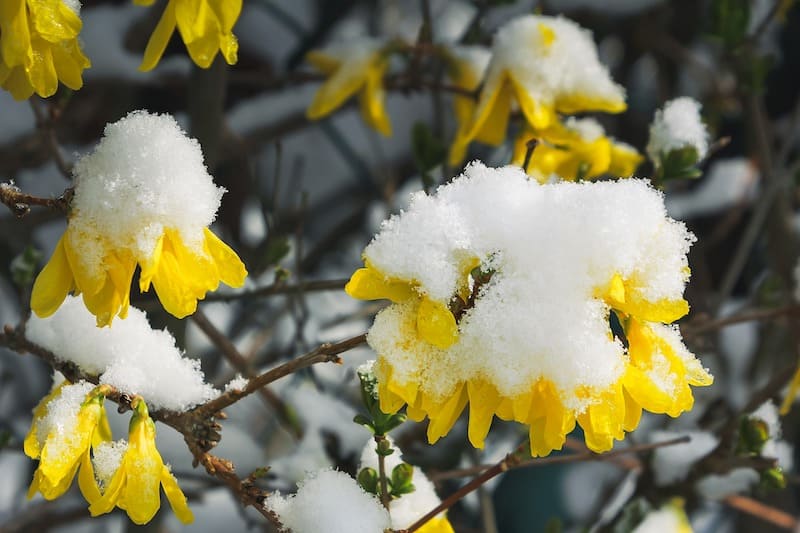
These fast-growing shrubs are virtually indestructible, tolerating poor soil, urban pollution, and neglect. The key to maximum flowering is proper pruning—immediately after blooming, never in fall or winter when you’d remove flower buds.
‘Lynwood Gold’ is particularly floriferous, while ‘Gold Tide’ stays compact at just two feet tall, perfect for smaller gardens.
Winter-Blooming Heathers: Extended Color
While winter heath was covered earlier, the broader world of winter heathers deserves exploration. Varieties of Erica carnea and Erica x darleyensis provide months of color from December through April. Unlike summer heathers, these tolerate alkaline soils and part shade, greatly expanding their garden use.
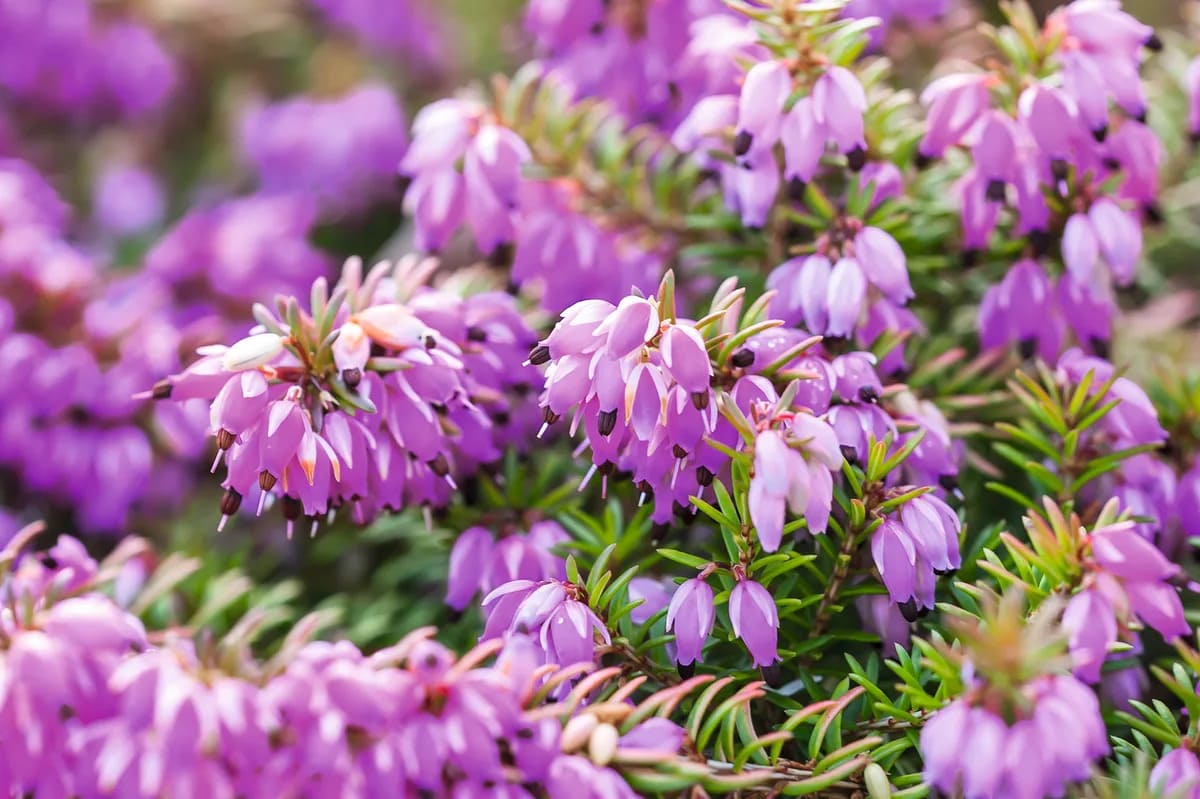
‘Springwood White’ creates snow-white carpets, while ‘Vivellii’ offers deep carmine flowers against bronze winter foliage. ‘Mediterranean Pink’ blooms for an incredibly long period, often from November through May. Plant different varieties for a succession of bloom and combine with dwarf conifers for year-round structure in rock gardens or containers.
Leucojum: The Bigger Snowdrop
Spring snowflake (Leucojum vernum) looks like a snowdrop on steroids, with larger flowers featuring distinctive green spots on each petal tip. Blooming slightly later than snowdrops, from February through March, they bridge the gap between the earliest bulbs and main spring display.
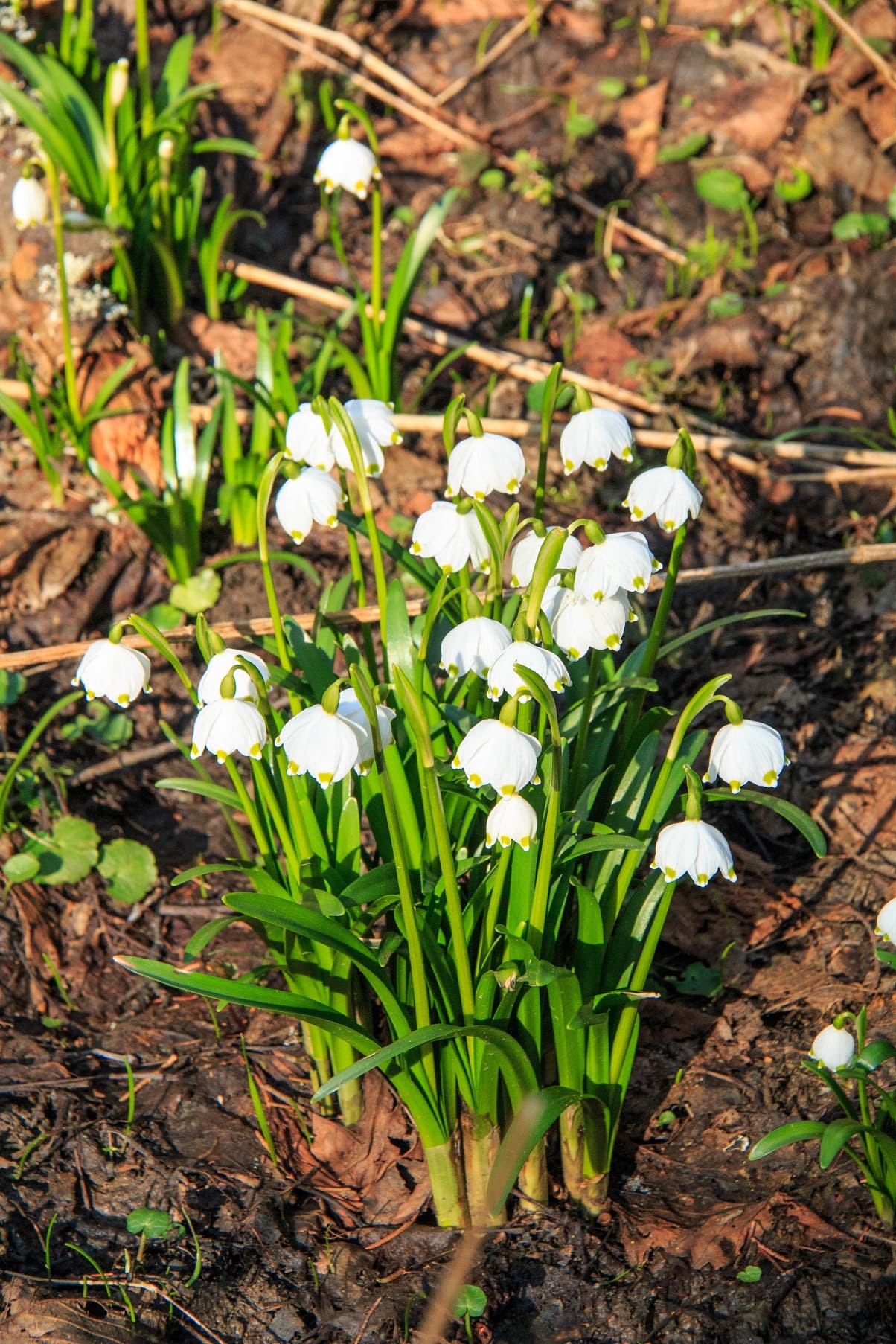
These bulbs prefer moister conditions than snowdrops and naturalize well in damp areas where other bulbs might rot. They’re perfect for planting along stream banks, in rain gardens, or in consistently moist shade.
The summer snowflake (Leucojum aestivum) despite its name, often blooms in late winter in mild climates, offering another option for succession planting.
Sweet Alyssum: The Mild Climate Wonder
In zones 9-11, sweet alyssum transforms from summer annual to winter bloomer, creating carpets of tiny, honey-scented flowers from November through March. These low-growing plants spread quickly, filling gaps between larger plants and softening hard edges of paths and patios.

White varieties like ‘Carpet of Snow’ are most fragrant, while purple varieties like ‘Royal Carpet’ add deeper color to winter combinations. They self-sow prolifically, ensuring future displays without replanting. In colder zones, try sowing seeds in cold frames in January for early spring transplants that will bloom weeks before those sown outdoors.
Beyond Flowers: Winter Structure and Interest
Not every winter garden star produces flowers. Some plants earn their place through architectural form, colorful bark, or persistent berries that rival any bloom for visual impact.
1. Red twig dogwood (Cornus sericea) lights up the winter landscape with brilliant red or yellow stems, depending on variety. Cut them back hard in early spring to encourage the colorful new growth that shows best in winter. ‘Arctic Fire’ stays compact at four feet, while ‘Flaviramea’ offers yellow stems for contrast.
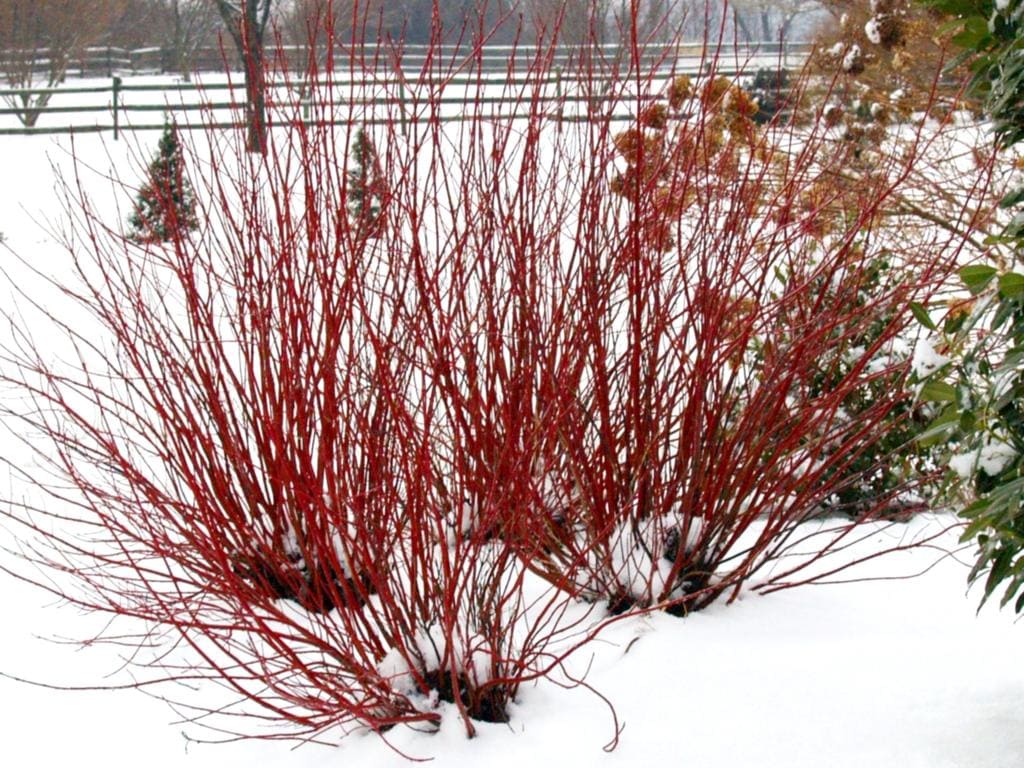
2. Beautyberry (Callicarpa) produces clusters of metallic purple berries that persist after leaves fall, creating an almost artificial-looking display that stops people in their tracks. The white-berried variety ‘Leucocarpa’ is even more unusual. These shrubs need cross-pollination for best berry production, so plant at least two.
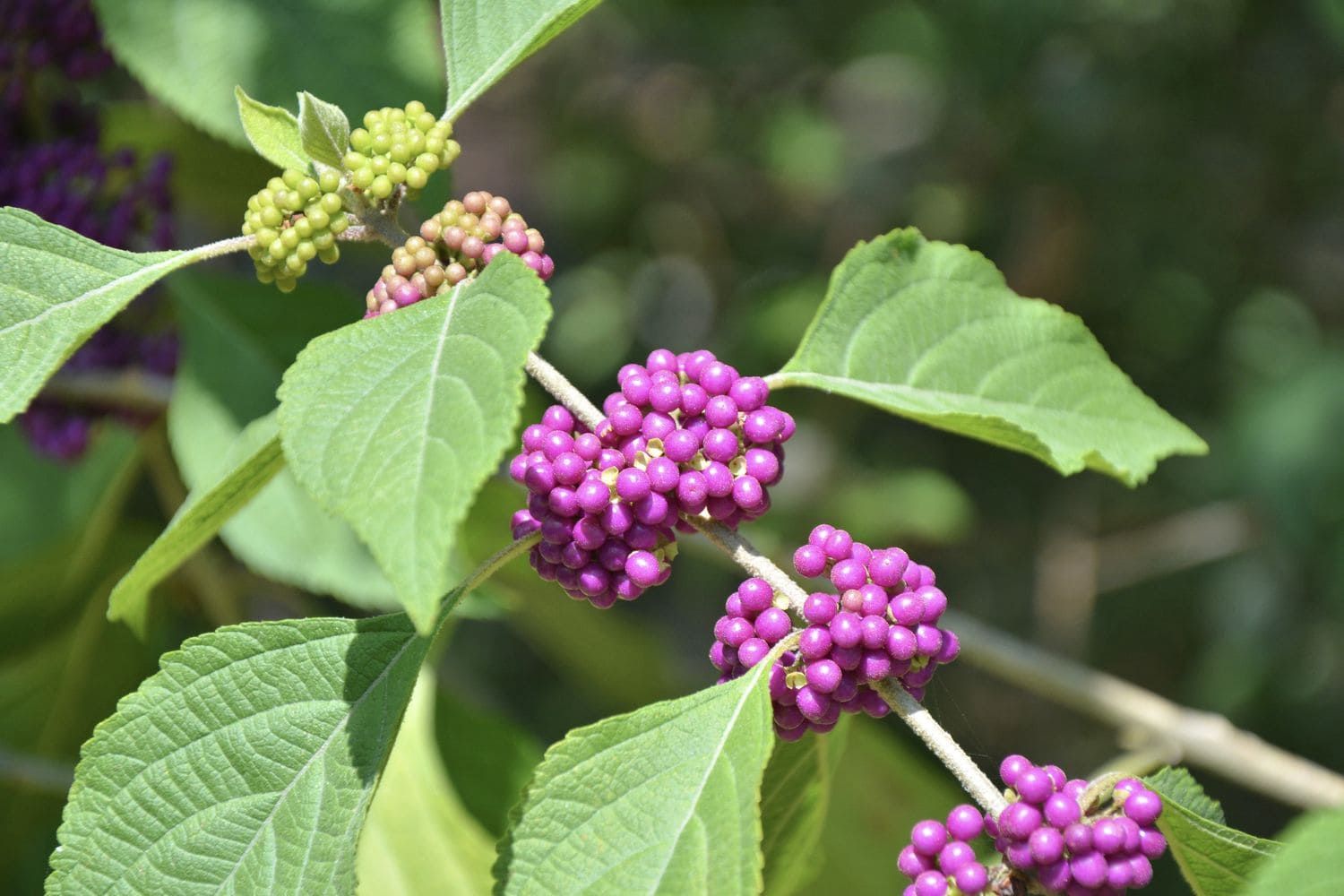
3. Harry Lauder’s walking stick (Corylus avellana ‘Contorta’) becomes a living sculpture in winter when its fantastically twisted branches are revealed. Underplant with white snowdrops or yellow winter aconite for a stunning contrast between the dark, contorted branches and delicate flowers.
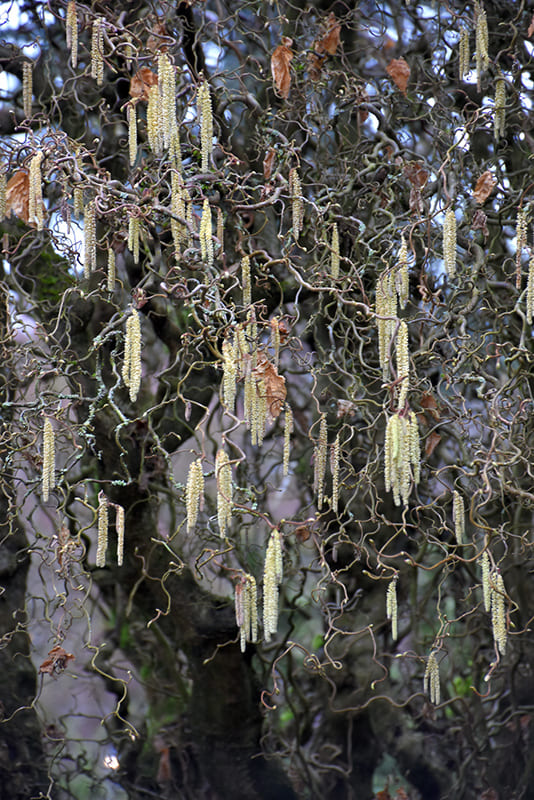
Indoor Winter Bloomers: Bringing the Garden Inside
When outdoor conditions become too harsh, or if you’re limited to apartment living, indoor winter bloomers offer the same seasonal joy.
1. Amaryllis bulbs, planted in decorative containers, produce spectacular trumpet-shaped blooms in shades from pure white to deep burgundy. The key is providing bright light and rotating the pot regularly to prevent leaning.
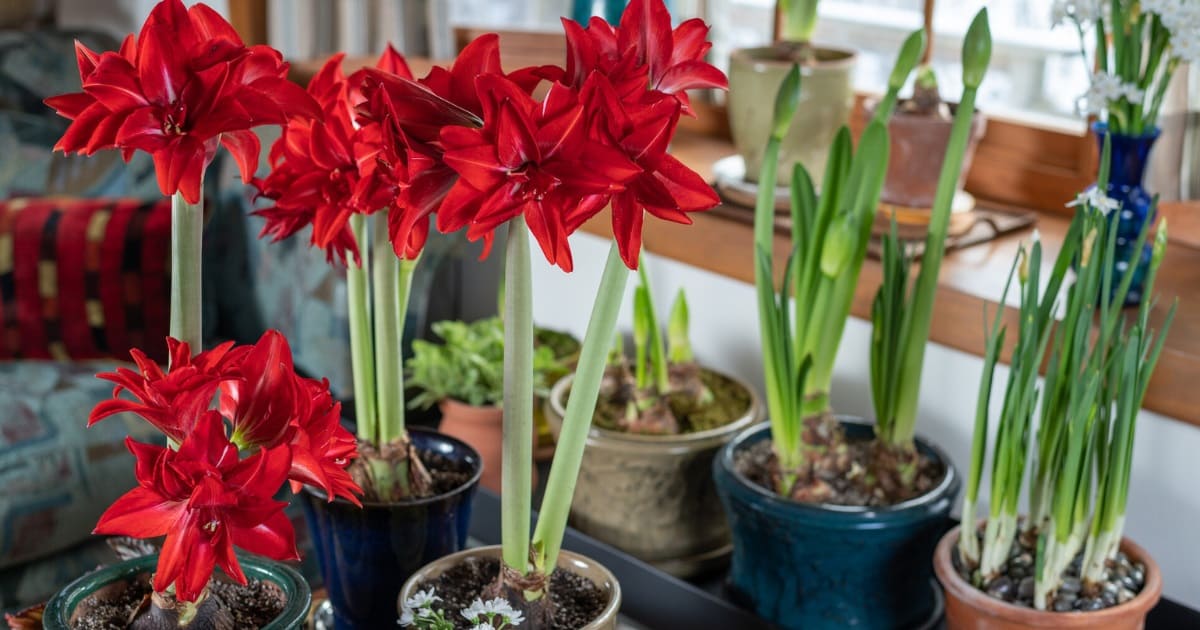
2. Christmas cactus, despite its name, often blooms from Thanksgiving through February with proper care. These succulents need bright indirect light and prefer to be slightly pot-bound. The secret to reliable blooming is providing long nights (14 hours of darkness) for six weeks before you want flowers.
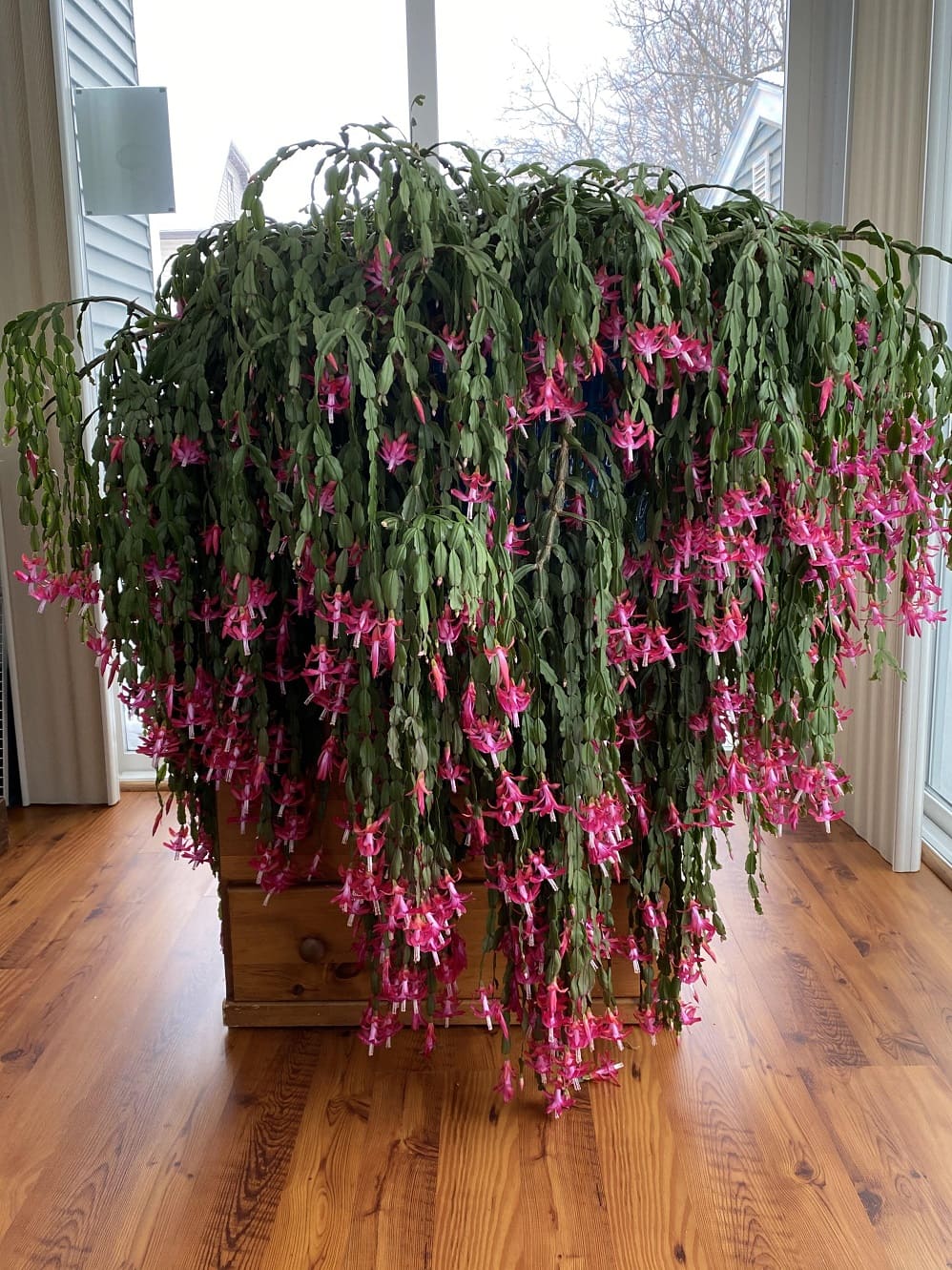
3. Forced bulbs like paperwhites, hyacinths, and prepared amaryllis bring outdoor fragrance and color inside. Most require a cooling period to bloom, though paperwhites are an exception, needing only water and stones to produce their intensely fragrant flowers. Start bulbs every two weeks from November through January for continuous blooms all winter.
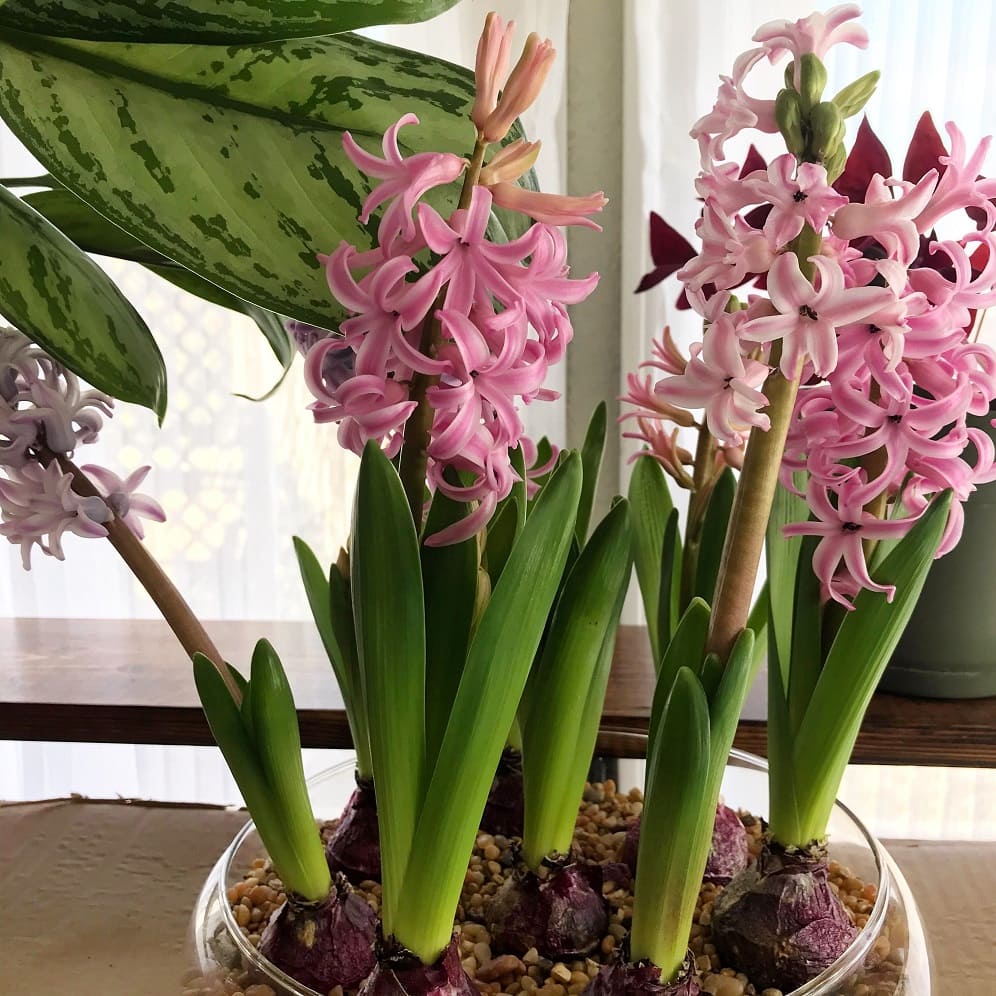
👉 Discover 34 Best Air-Purifying Indoor Plants That Thrive Without Direct Sunlight
Creating Your Winter Garden Design
Successful winter gardens require thoughtful planning beyond just plant selection. Think of your garden as a three-dimensional painting where you’re working with structure, texture, and color to create visual interest when many plants are dormant.
Start with the backdrop—evergreen shrubs like mahonia and camellias provide year-round structure while offering winter blooms as a bonus. Add deciduous shrubs like witch hazel and winter jasmine for dramatic focal points; their interesting branch structures provide appeal even when not blooming.
Layer in perennials like hellebores and primroses at mid-level, then carpet the ground with bulbs and low-growing plants like winter aconite and cyclamen.
Color strategy matters more in winter when flowers are precious. Cool palettes combining white snowdrops, pale pink hellebores, and silver-leafed cyclamen create serene, sophisticated scenes.
For warmth and energy, combine yellow winter jasmine, orange witch hazel, and red camellias. The jewel-tone approach—mixing purple crocuses, magenta cyclamen, and deep pink camellias—creates richness that stands out against winter’s neutral backdrop.
Consider sight lines from windows where you’ll most appreciate winter color during bad weather. Position fragrant plants near entrances where you’ll encounter their perfume regularly.
Use the contrast of dark evergreen backgrounds to make pale flowers pop, and remember that backlighting from low winter sun can transform ordinary flowers into glowing lanterns.
Winter Watering Wisdom
Watering in winter presents unique challenges that can make or break your winter bloomers. The key is understanding that plants need less water when dormant but still require moisture to survive. Frozen ground prevents water absorption, so timing is crucial.
Water only when soil is thawed and temperatures are above freezing, ideally during midday when absorption is best. Morning watering risks ice formation if temperatures drop, while evening watering doesn’t allow proper absorption.
Check soil moisture by digging down a few inches—if it’s moist, wait. Overwatering in winter kills more plants than cold itself, as wet soil freezes harder and damages roots more severely than slightly dry soil.
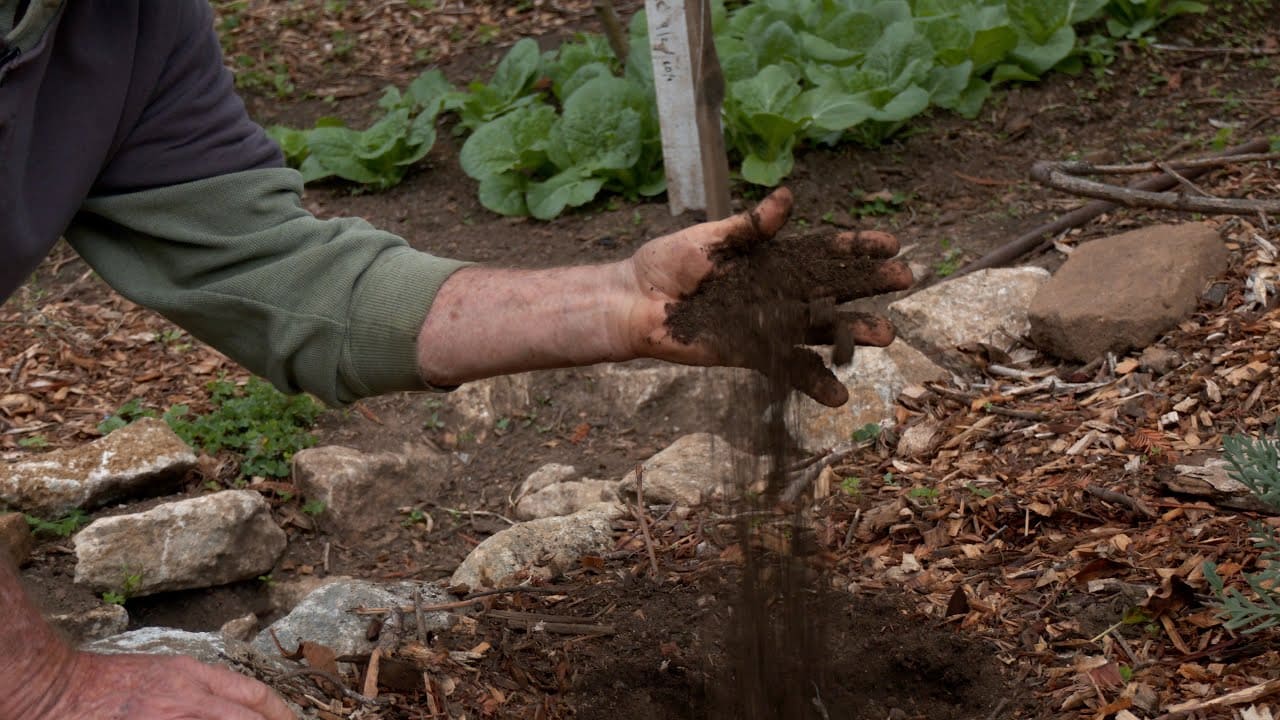
For container plants, drainage becomes even more critical in winter. Ensure pots have adequate drainage holes and consider raising them on pot feet to prevent water from pooling and freezing. In extremely cold regions, you might need to temporarily move containers to protected areas during severe cold snaps.
Soil Matters: pH and Amendments
Many winter bloomers have specific soil requirements that determine their success. Acid-loving plants like camellias, pieris, and winter heath need soil pH between 5.0 and 6.0. If your soil is alkaline, you can acidify it with sulfur or grow these plants in containers with ericaceous compost.
Most other winter bloomers prefer neutral to slightly alkaline soil (pH 6.5-7.5). Hellebores, particularly, thrive in limestone soils. Test your soil pH with an inexpensive kit from garden centers, then amend accordingly. Adding organic matter improves any soil, increasing drainage in clay while improving water retention in sand.
Fall soil preparation sets the stage for winter success. Incorporate compost or well-rotted manure when planting, but avoid high-nitrogen fertilizers that promote soft growth vulnerable to frost damage. A balanced, slow-release fertilizer with higher phosphorus (the middle number) encourages flowering over foliage.
👉 Here’s How to Prepare Land for Planting: A Comprehensive Guide for Gardeners and Farmers
Practical Care Through the Seasons
Fall preparation makes the difference between winter flowers that thrive and those that merely survive. Plant early, ideally by mid-October, while soil remains warm enough for root establishment. This gives plants six to eight weeks to settle before serious cold arrives.
Amend planting holes with compost but avoid fresh manure which can burn roots. Water thoroughly after planting and maintain consistent moisture until the ground freezes.
Apply a two to three-inch layer of mulch after the first hard freeze, not before. Early mulching keeps soil too warm, preventing plants from properly hardening for winter. The mulch isn’t to keep plants warm but to maintain consistent soil temperature, preventing the freeze-thaw cycles that heave plants from the ground.
👉 Here’s How to Turn Fall Leaves into Soil Enriching Mulch For a Nutrient-Rich Garden
During winter, resist the urge to tidy up too much. Seed heads provide food for birds and structure for frost to create beautiful effects. Dead foliage insulates crowns and roots. However, do remove diseased material to prevent problems spreading.
On mild days when soil is thawed, water if conditions have been dry—winter drought is real and damages plants as much as summer drought.
Protect vulnerable plants during extreme weather without coddling them. Temporary coverings during unusual cold snaps help, but remove them once temperatures moderate to prevent overheating and fungal problems. Anti-desiccant sprays on broadleaf evergreens reduce moisture loss from winter winds.
Common Challenges and Solutions
Even experienced gardeners face challenges with winter bloomers.
1. Frost damage on flowers is perhaps the most frustrating, especially when early warm spells encourage premature blooming.
The solution lies in careful siting—avoid south-facing positions that warm quickly on sunny winter days, encouraging growth that subsequent freezes will damage. East-facing sites that warm gradually are ideal.
2. Poor flowering despite healthy growth usually indicates insufficient chill hours for vernalization or excess nitrogen promoting leaves over flowers. Ensure plants receive adequate winter chill and adjust fertilization to lower nitrogen formulas.
Sometimes patience is required—many perennials need a year or two to establish before blooming prolifically.
👉 Here’s How to Add Nitrogen to Soil: 18 Quick Fixes + Long-Term Solutions
3. Pest problems don’t disappear in winter. Slugs particularly love hellebores and primroses during mild, wet periods. Copper barriers provide chemical-free protection, or use wildlife-safe iron phosphate slug pellets. Learn more here!
Deer browse many winter bloomers when other food is scarce. Strongly scented plants like daphne and mahonia are usually avoided, but physical barriers might be necessary for vulnerable plants like pansies and crocuses.
Budget-Conscious Winter Gardening
Creating a stunning winter garden needn’t strain your budget. Starting from seed saves enormous amounts—a packet of pansy seeds costing less than a single market pack can yield dozens of plants. Sow in late summer for winter blooms, using seed trays on a bright windowsill or cold frame.
Division multiplies your investment exponentially. Established hellebores, primroses, and snowdrops can be divided in spring, turning one plant into three or more. Share divisions with gardening friends and arrange swaps—your common plants might be someone else’s treasure.
Bulk purchasing makes sense for bulbs where mass planting creates impact. Buying snowdrops or crocuses in quantities of 100 or more dramatically reduces per-bulb cost. Split large orders with neighbors or gardening friends to access wholesale prices.
Propagation extends your garden for free. Winter jasmine roots readily from hardwood cuttings taken in late fall. Simply stick pencil-thick stems in sandy soil and wait. Many winter bloomers self-sow prolifically—allow some flowers to set seed and you’ll have free plants forever.
👉 Here’s How to Propagate Plants in Water: Easy Step-by-Step Method
Focus spending strategically. Rather than scattered purchases, concentrate on a few spectacular containers near your entrance or most-viewed window. One stunning display makes more impact than sparse plantings throughout the garden.
Your Winter Garden Journey Begins
This week, take a winter walk through your garden with fresh eyes. Note microclimates where snow melts first or frost forms last—these spots hold potential for marginally hardy plants. Photograph areas needing winter interest and imagine them transformed with color. Start a winter garden journal, recording what appeals to you in other gardens or photos.
This month, act on your observations. If it’s fall, there’s still time to plant bulbs and perennials for this winter’s show.
In spring, you’re perfectly positioned to add shrubs that’ll establish well before next winter. Order catalogs from specialty nurseries offering unusual varieties—the common selections at big box stores barely scratch the surface of what’s available.
This season, start small but think big. Choose three to five varieties that really excite you rather than trying everything at once. Take photos throughout winter to document successes and learning opportunities. Share your experiences with other gardeners—winter gardeners are a passionate bunch always eager to swap stories and plants.
The Winter Garden Promise
Winter gardens teach us that beauty doesn’t require perfect conditions. When a snowdrop pushes through frozen ground or a witch hazel blooms despite ice storms, we witness nature’s determination to bring joy regardless of circumstances. These gardens remind us that even in the darkest seasons, life finds a way to celebrate.
Your winter garden awaits. Whether you start with a single pot of pansies by your door or transform entire borders with hellebores and witch hazels, you’re joining an ancient tradition of gardeners who refuse to let winter win. The question isn’t whether you should create a winter garden—it’s which magnificent winter bloomer you’ll plant first.
The garden doesn’t sleep in winter; it simply dreams in different colors. Make those dreams reality in your own backyard, and discover that winter might just become your favorite gardening season.
Happy winter gardening! 🌸❄️
What’s blooming in your winter garden? Share your cold-season successes and challenges in the comments below—let’s celebrate the gardeners who bring color to winter!
